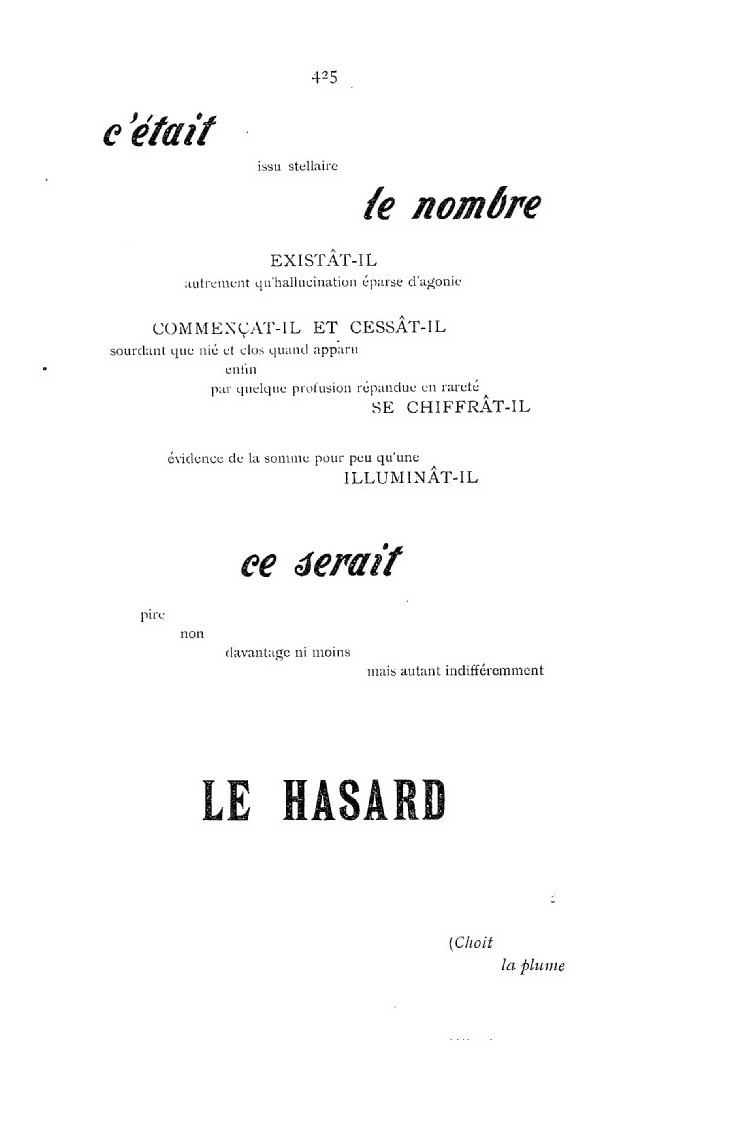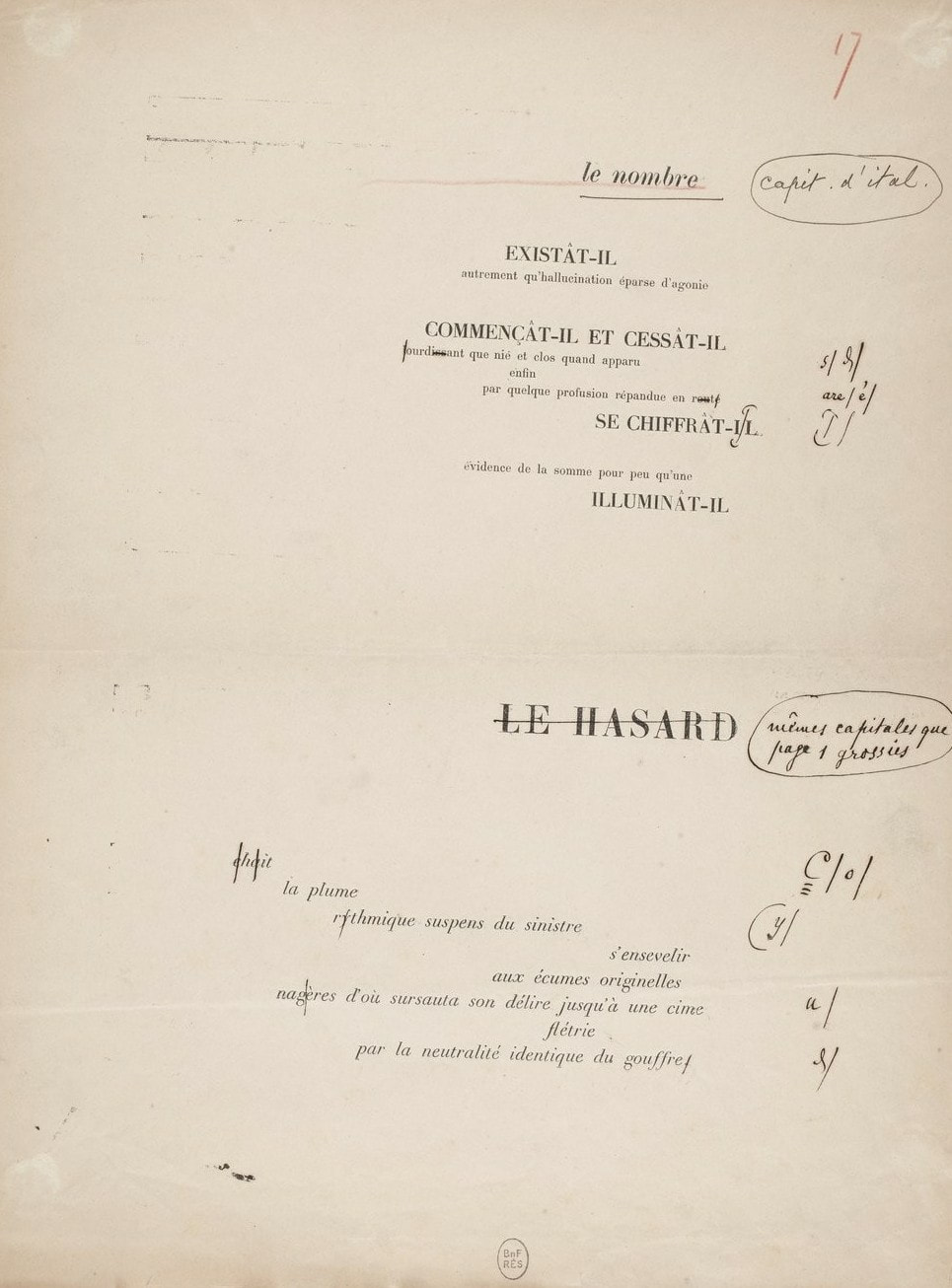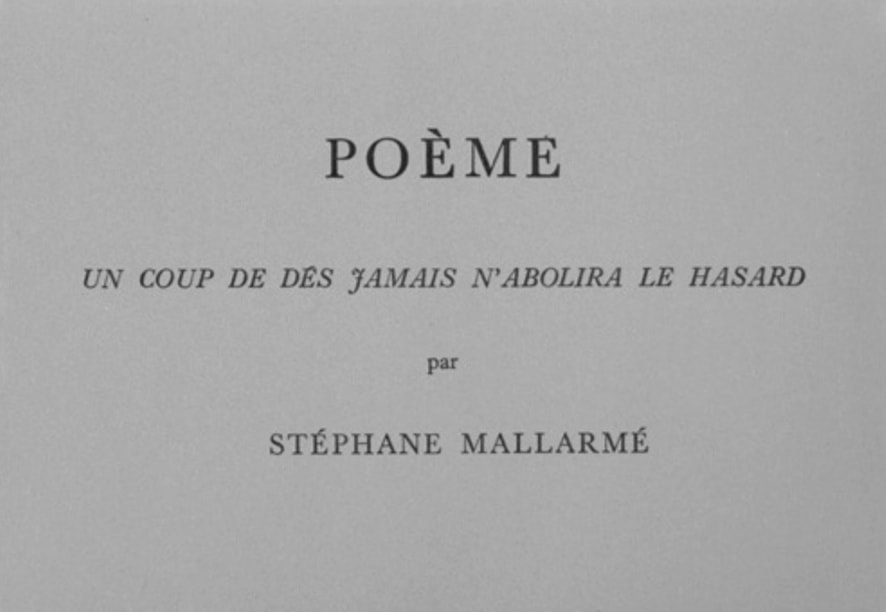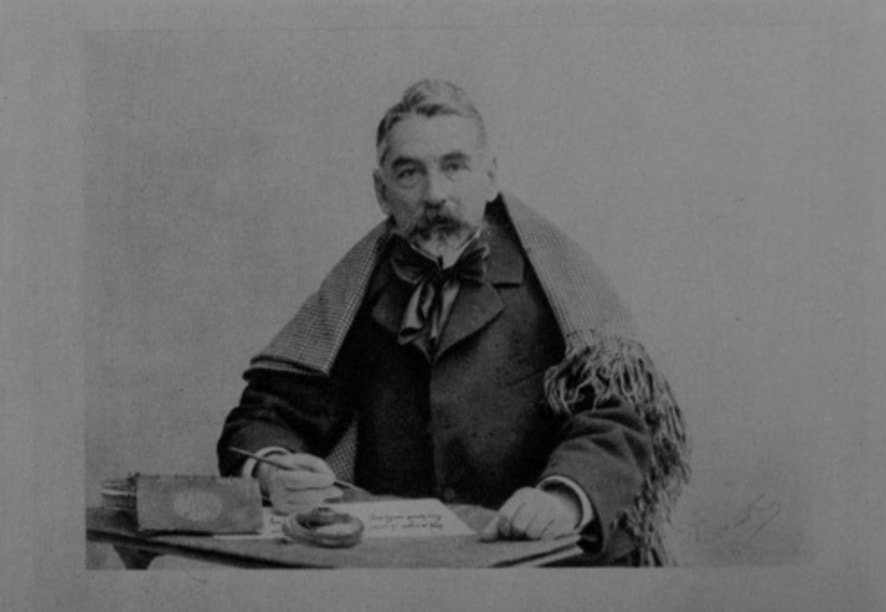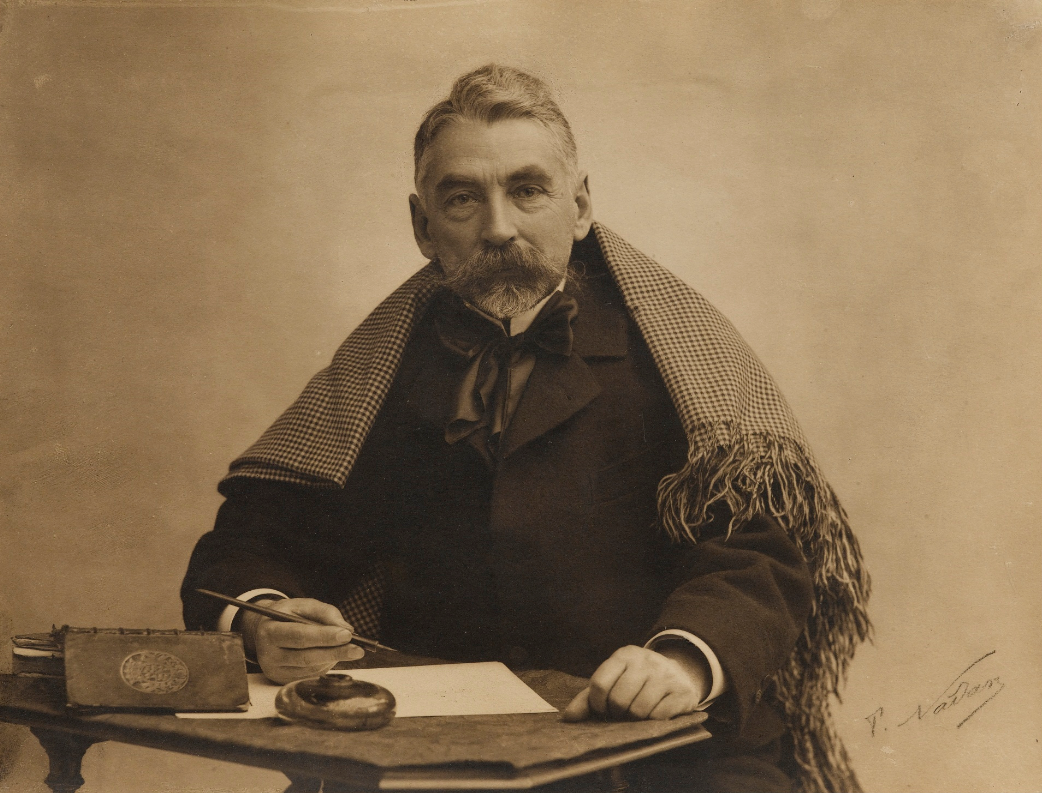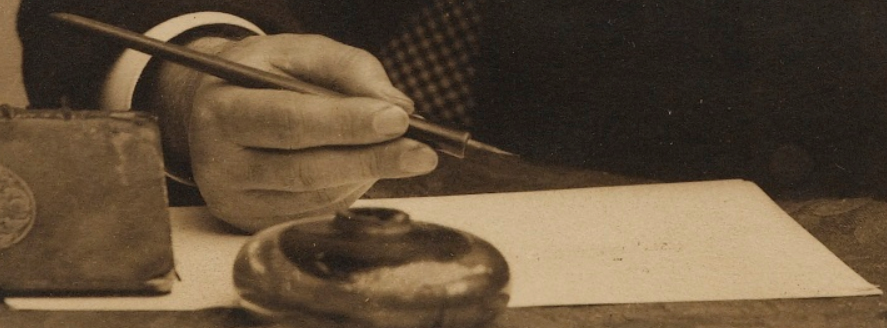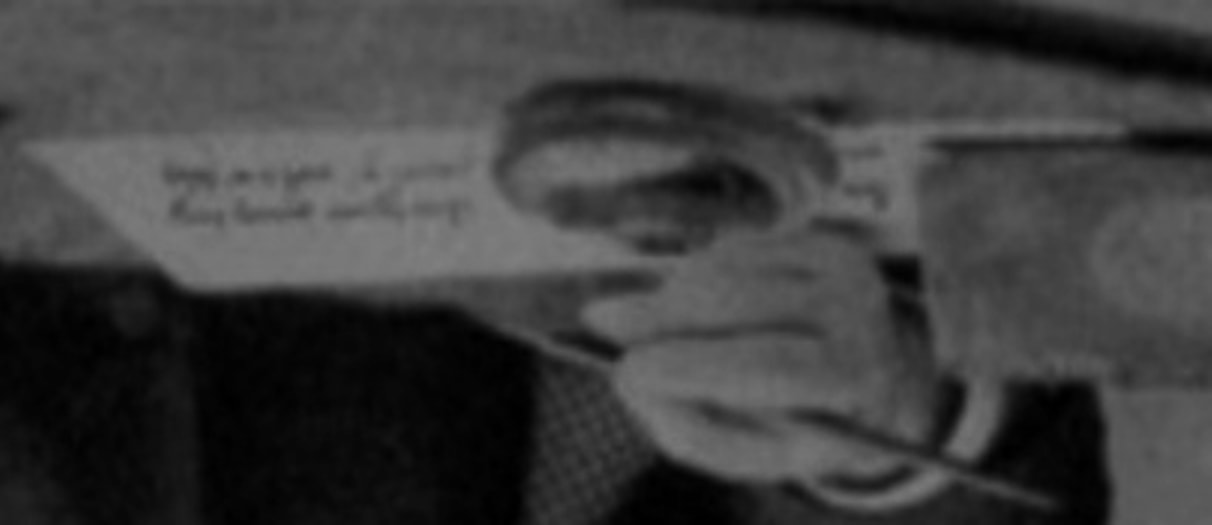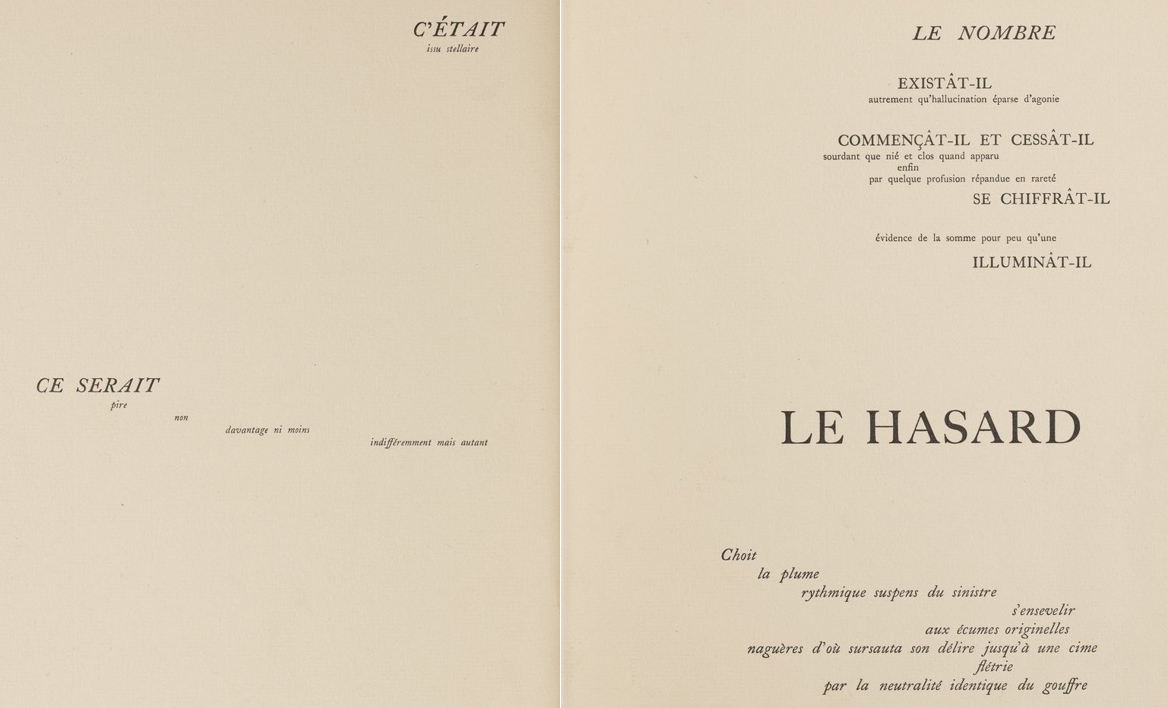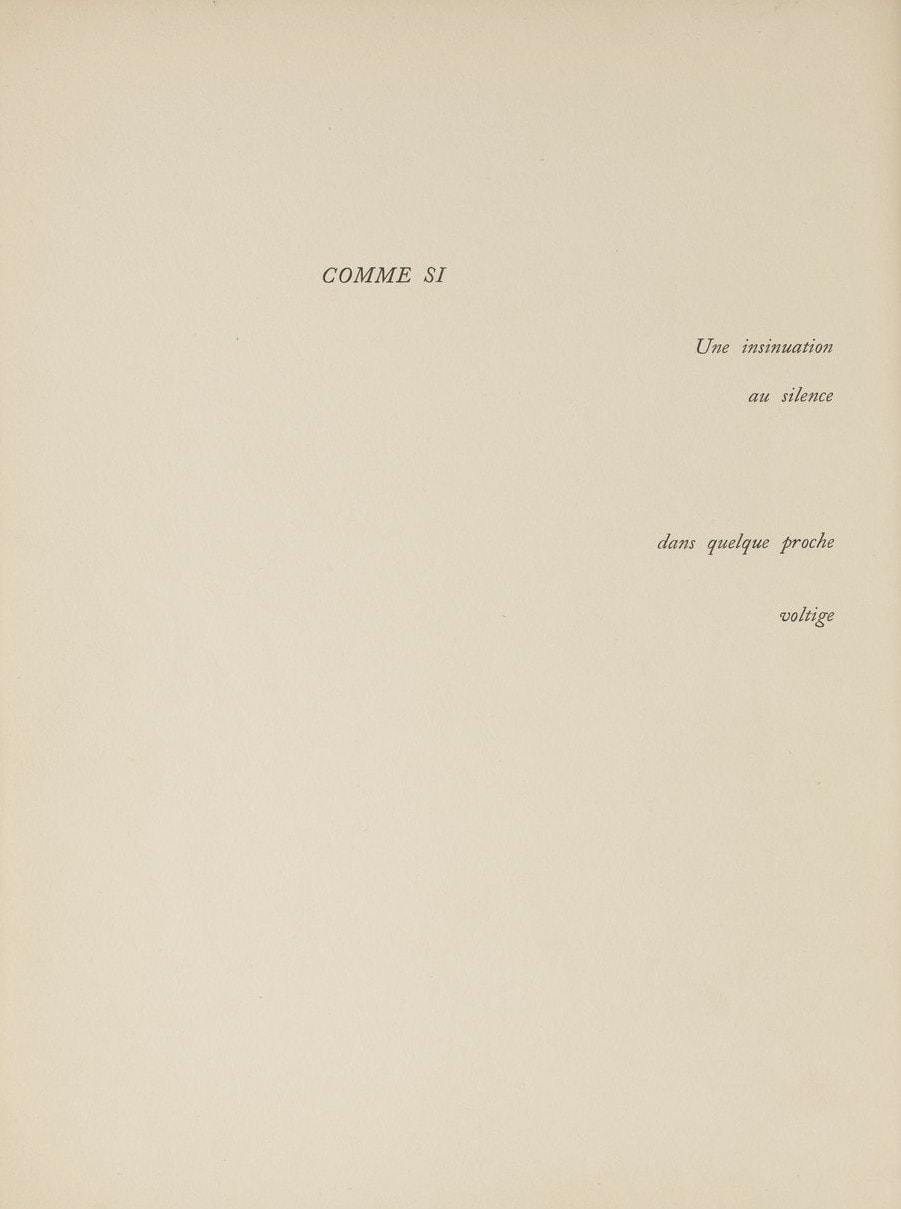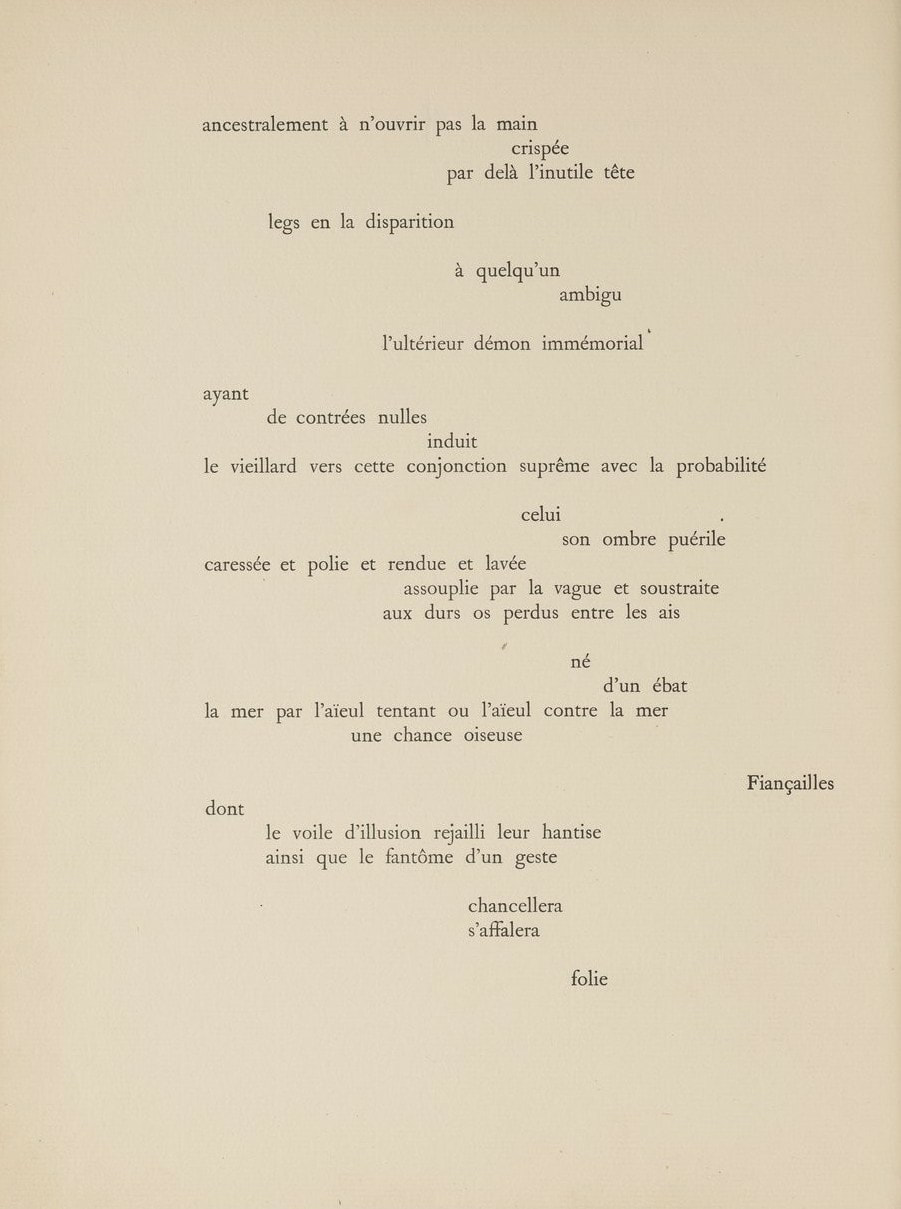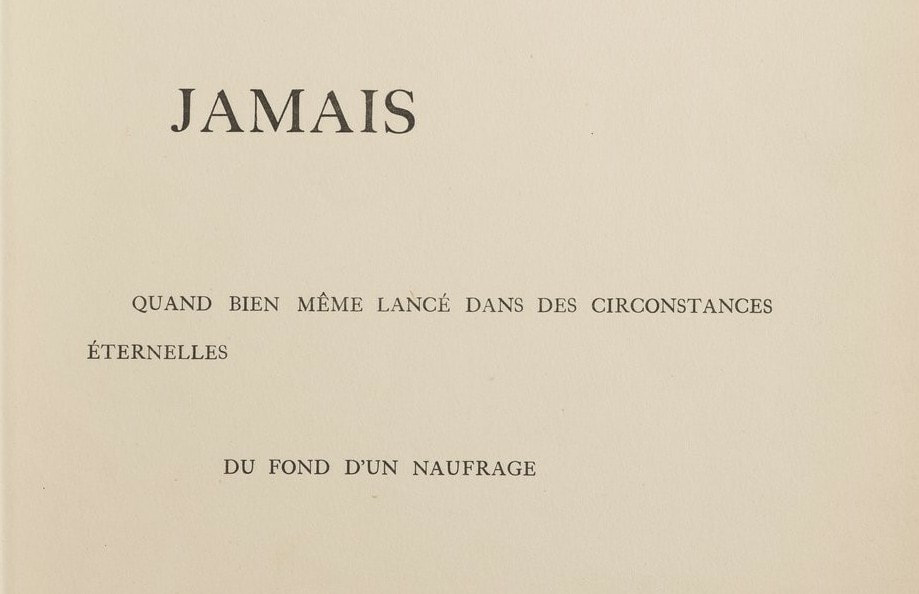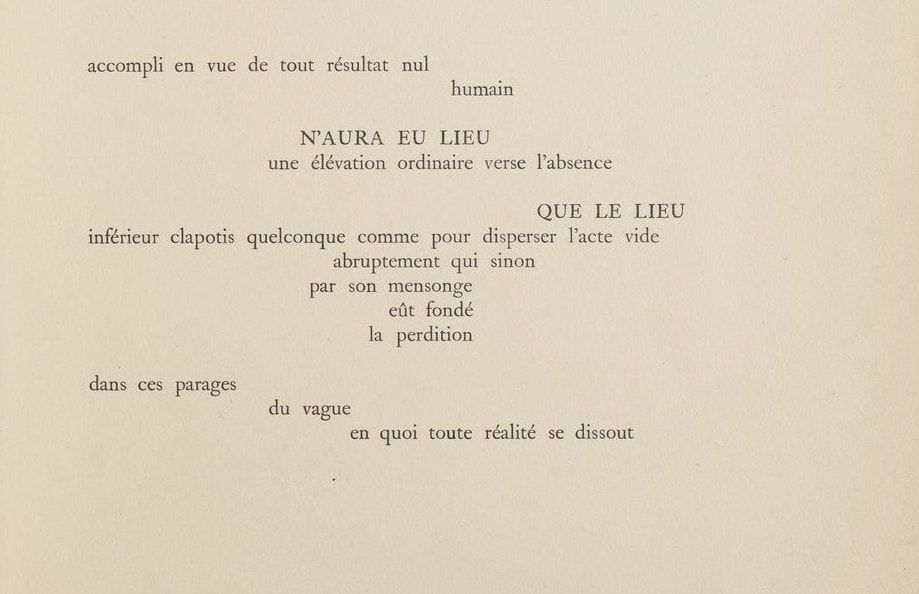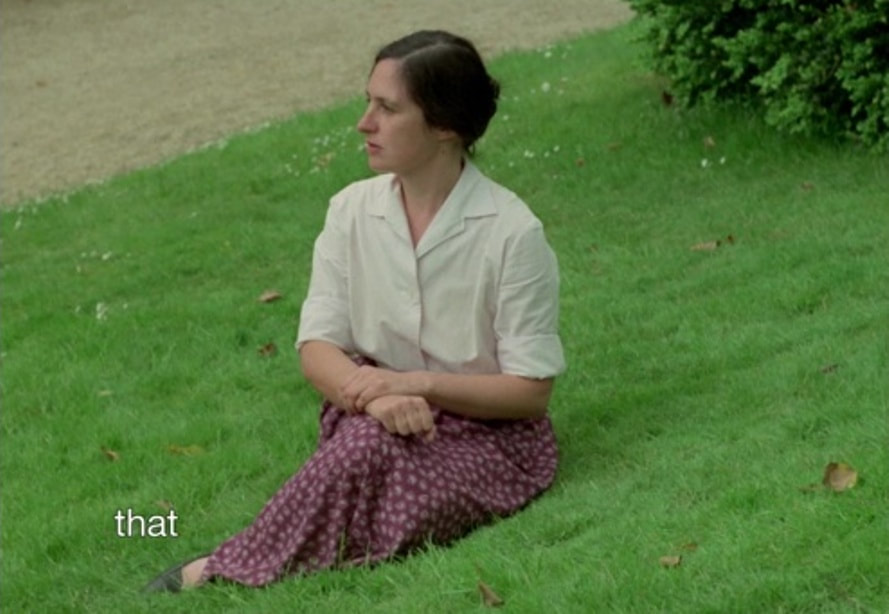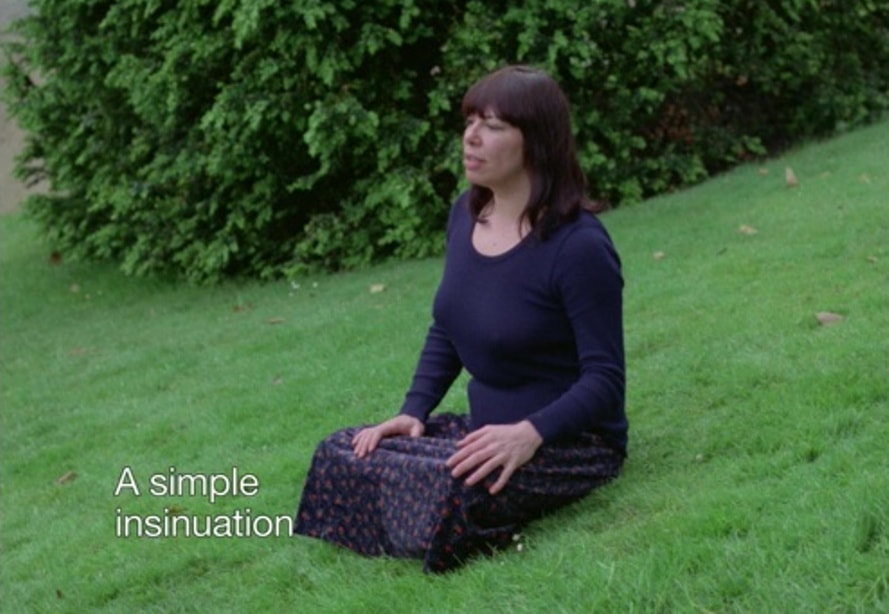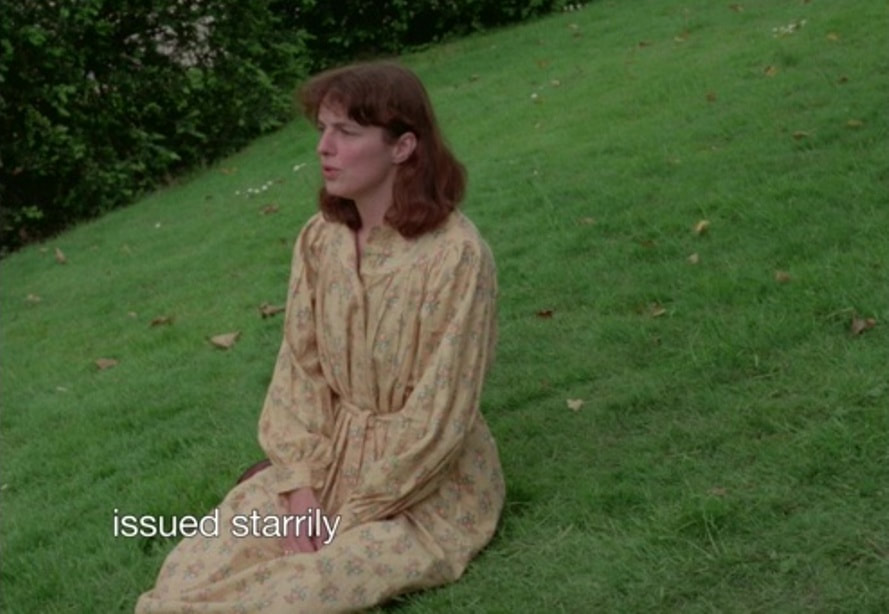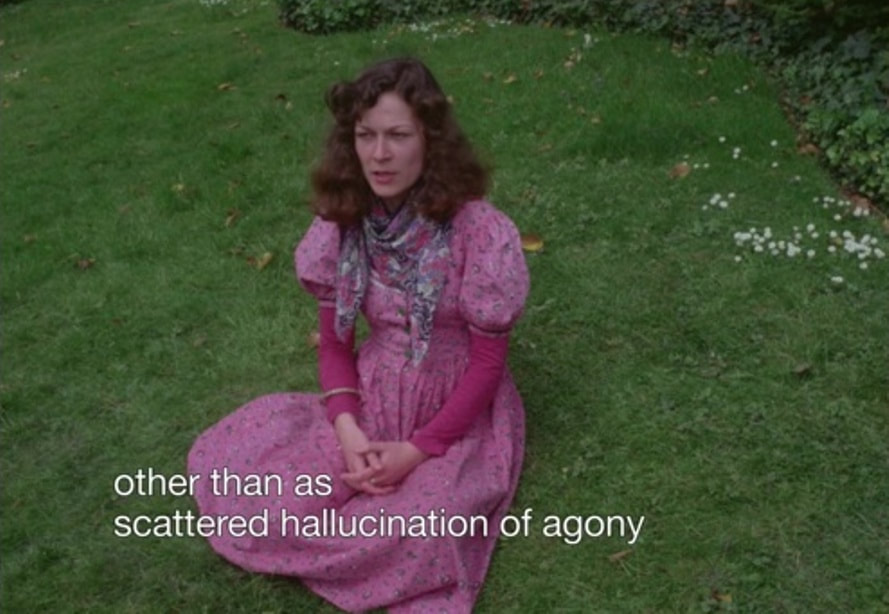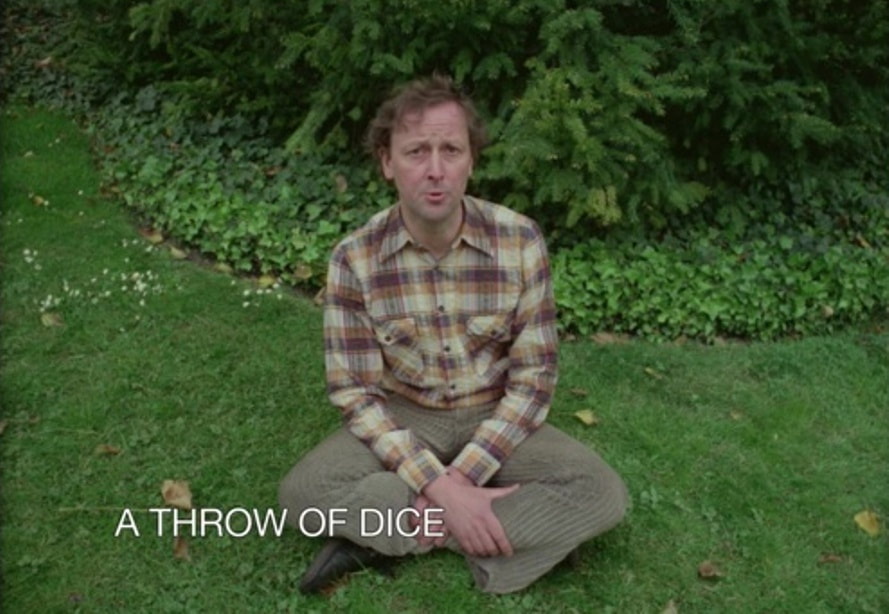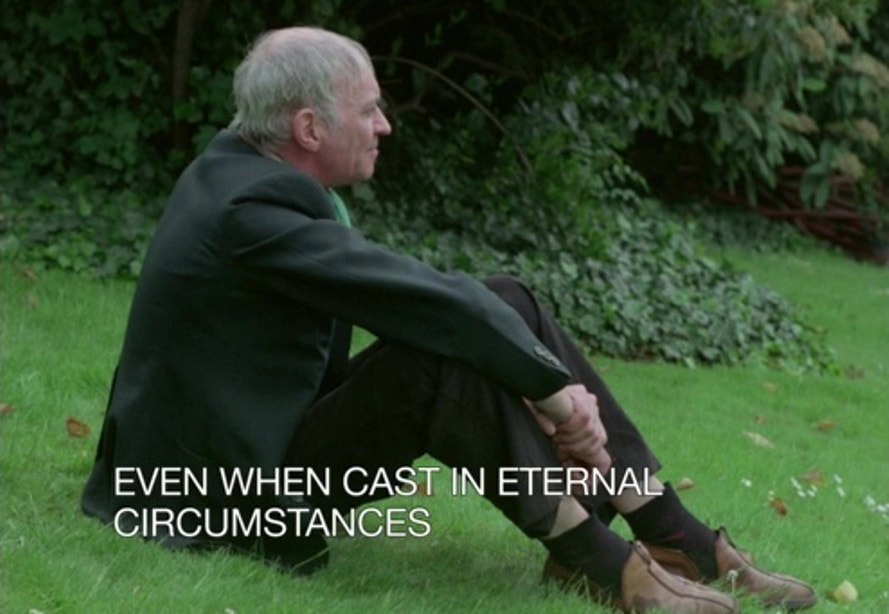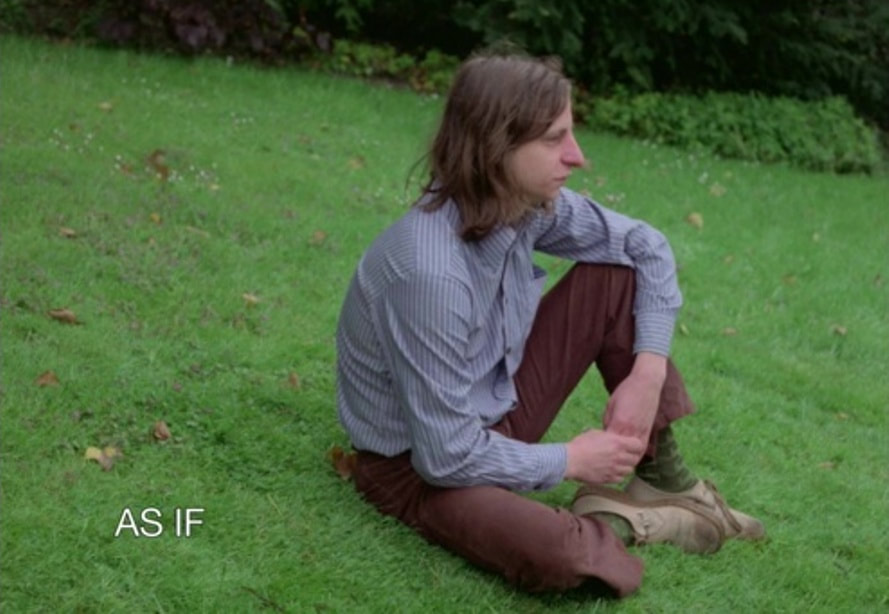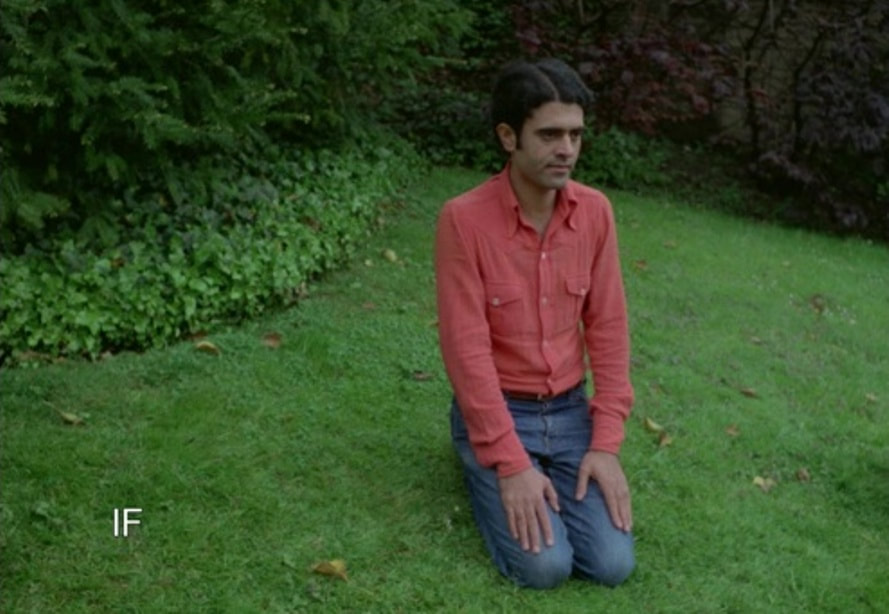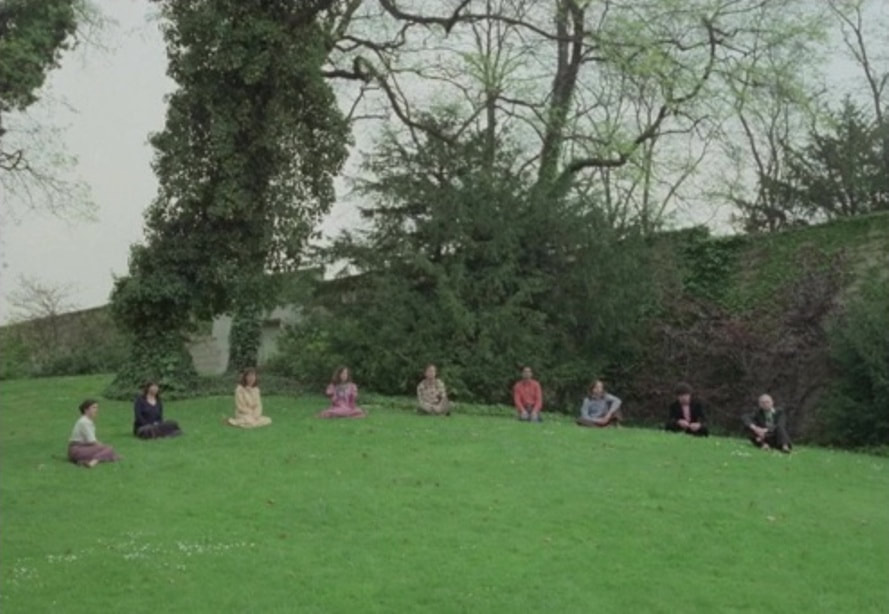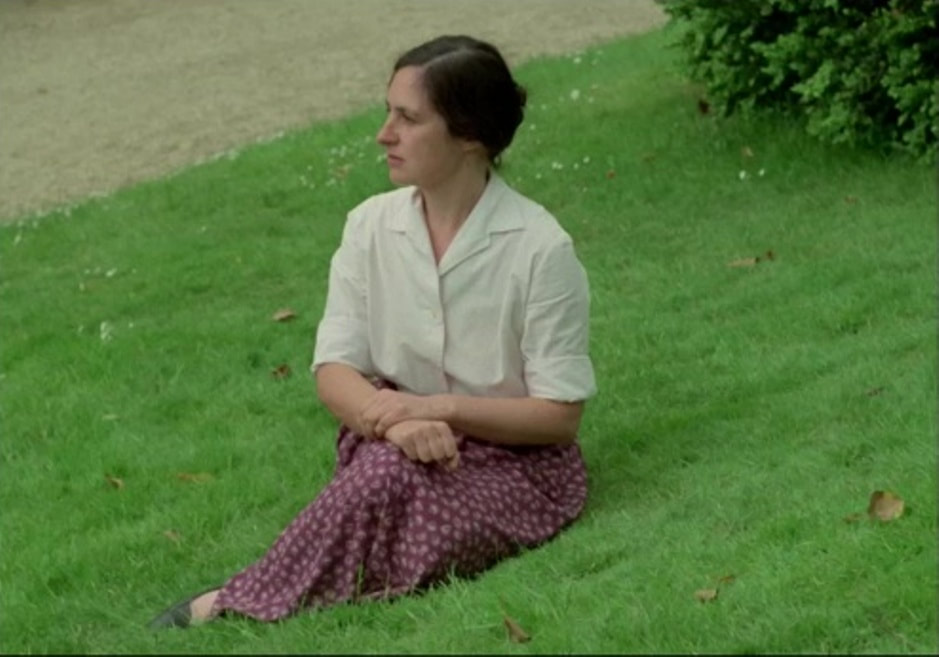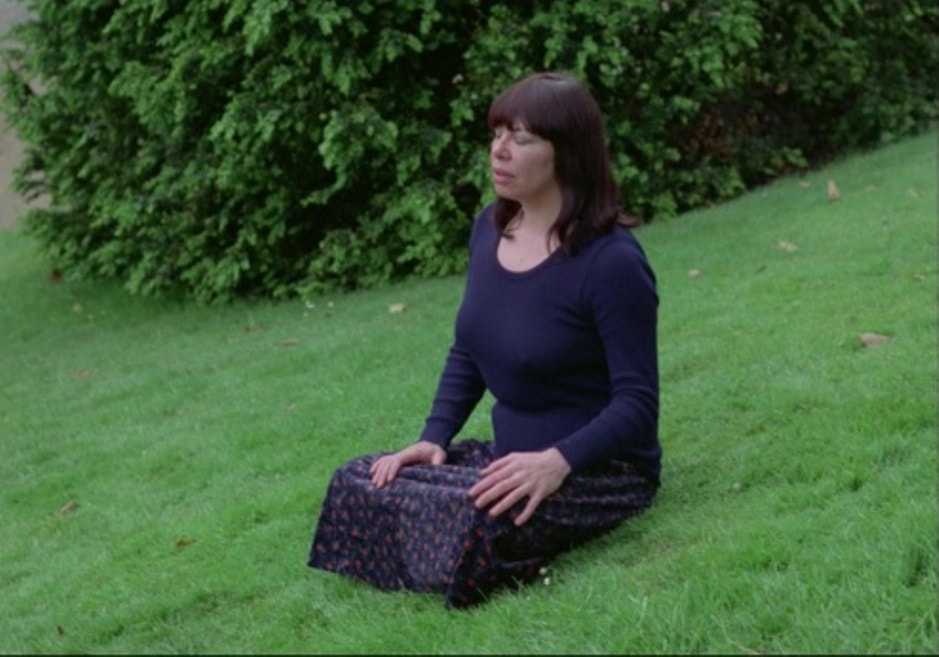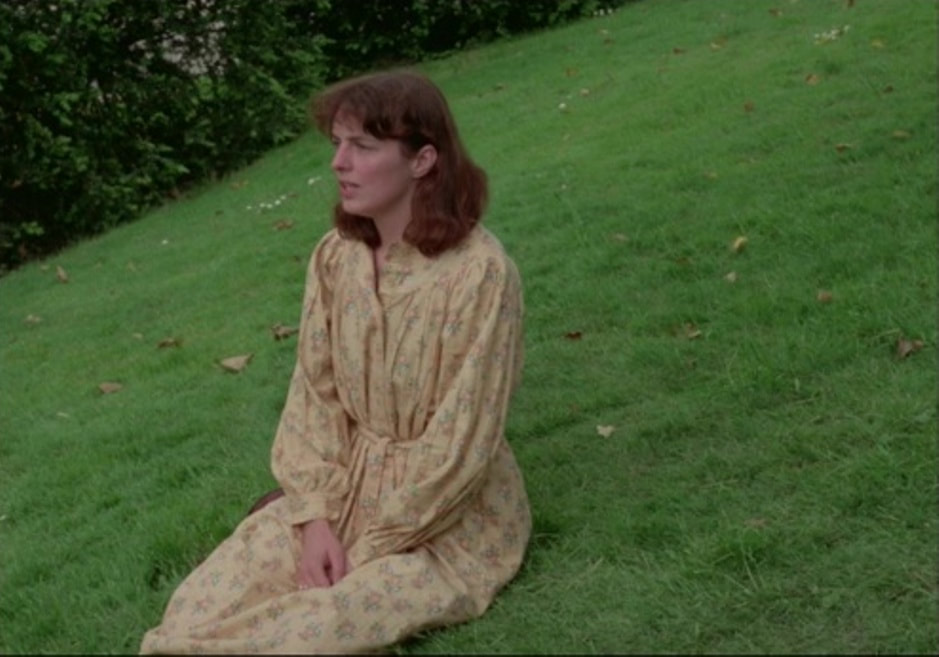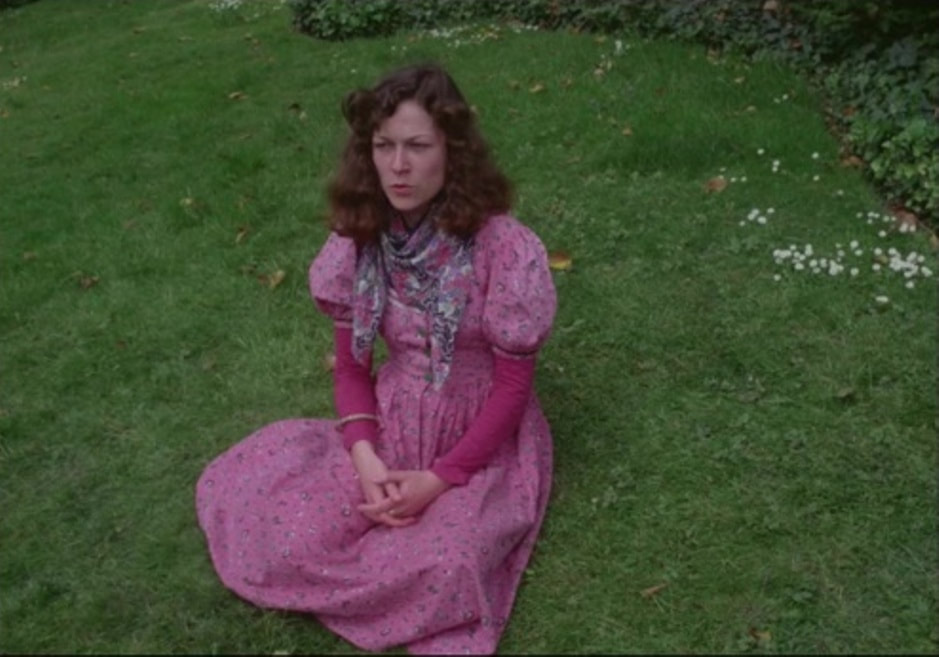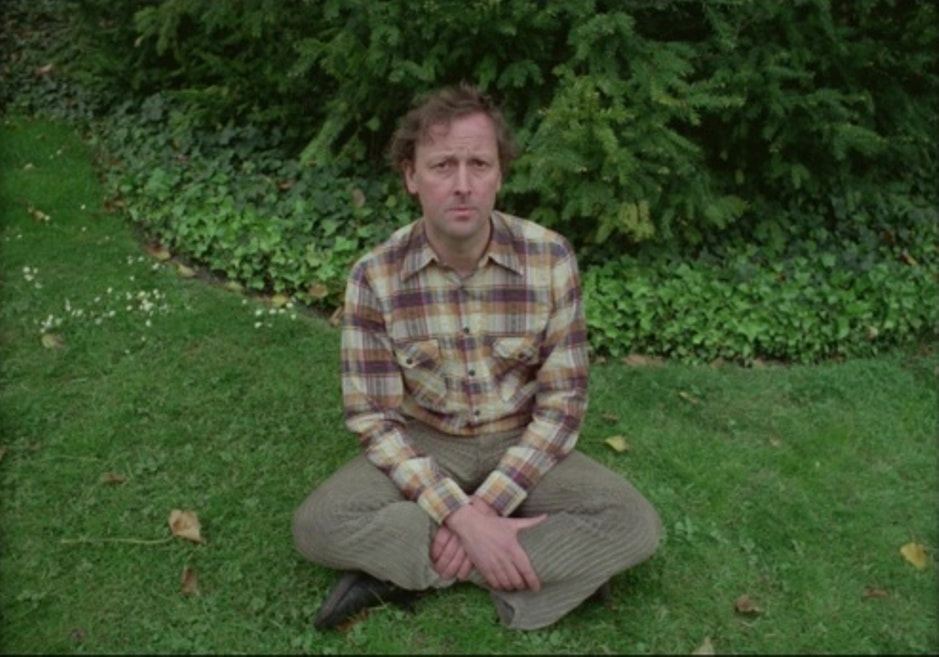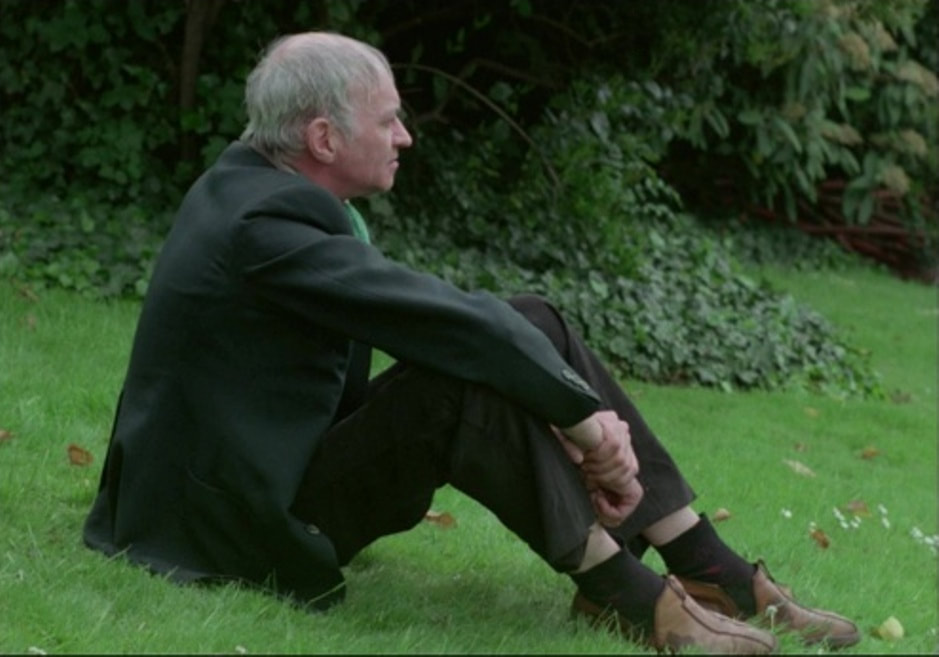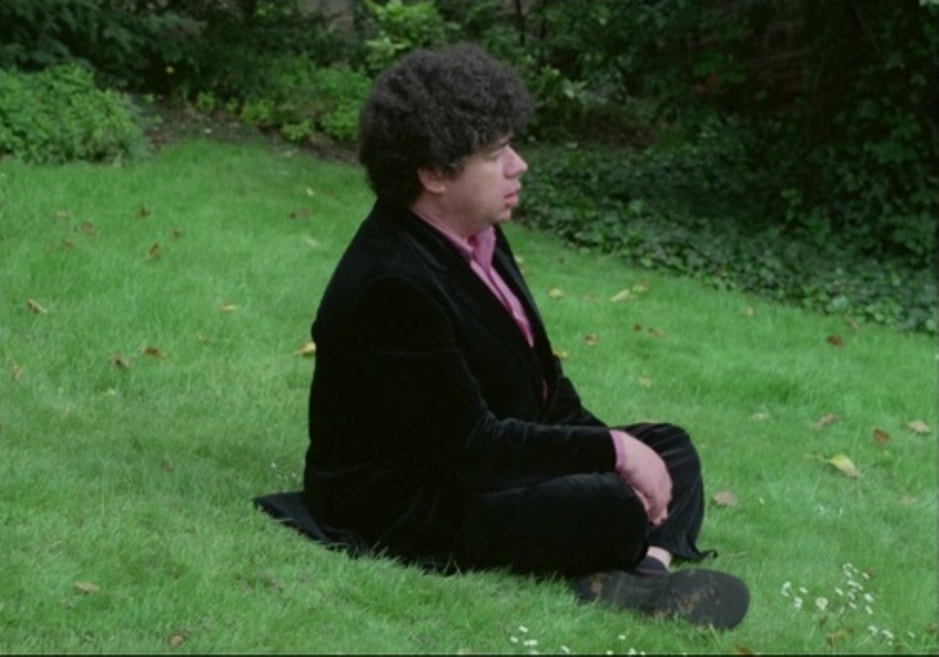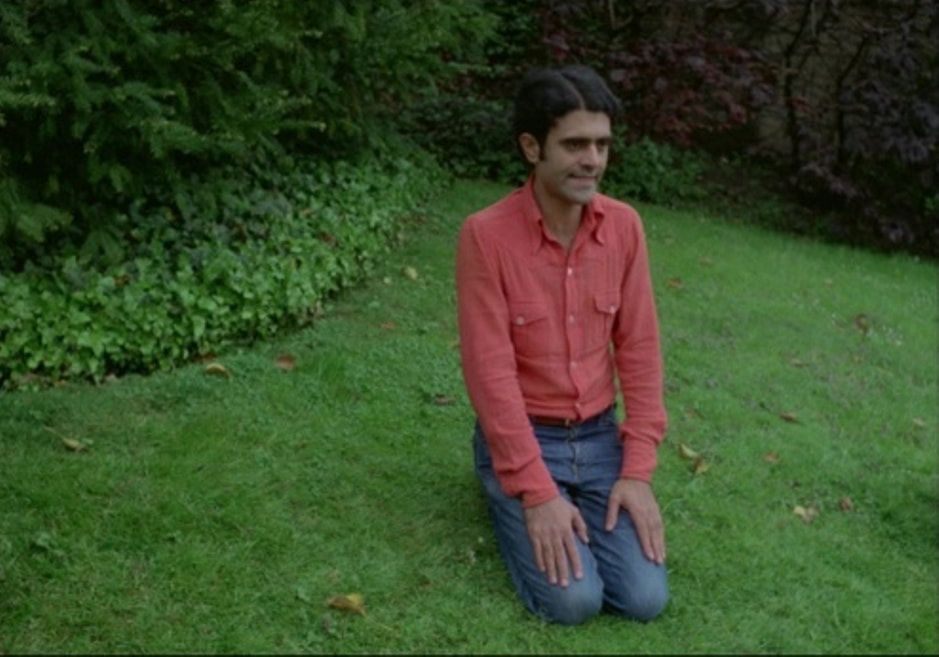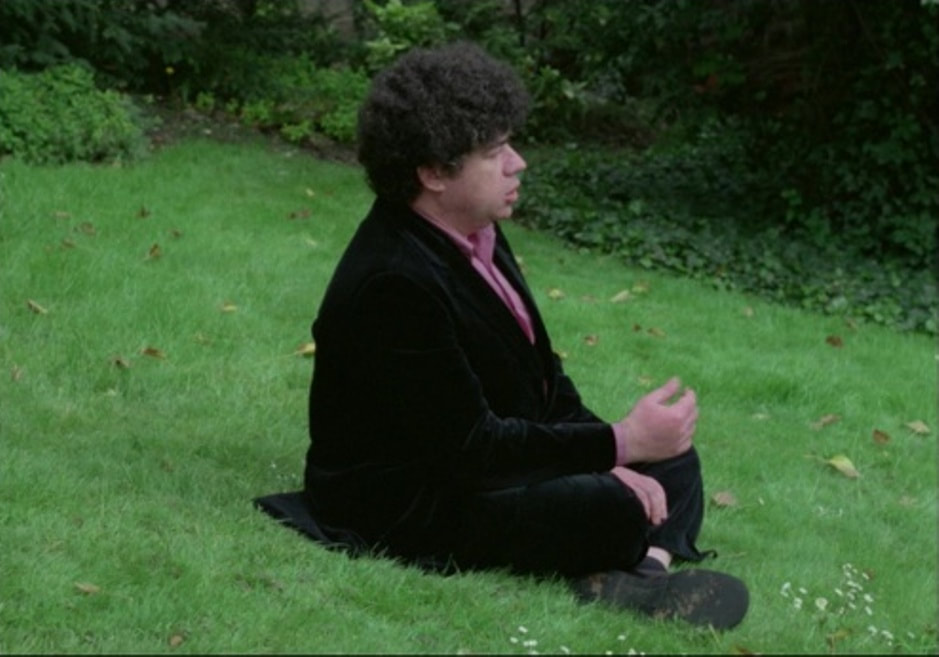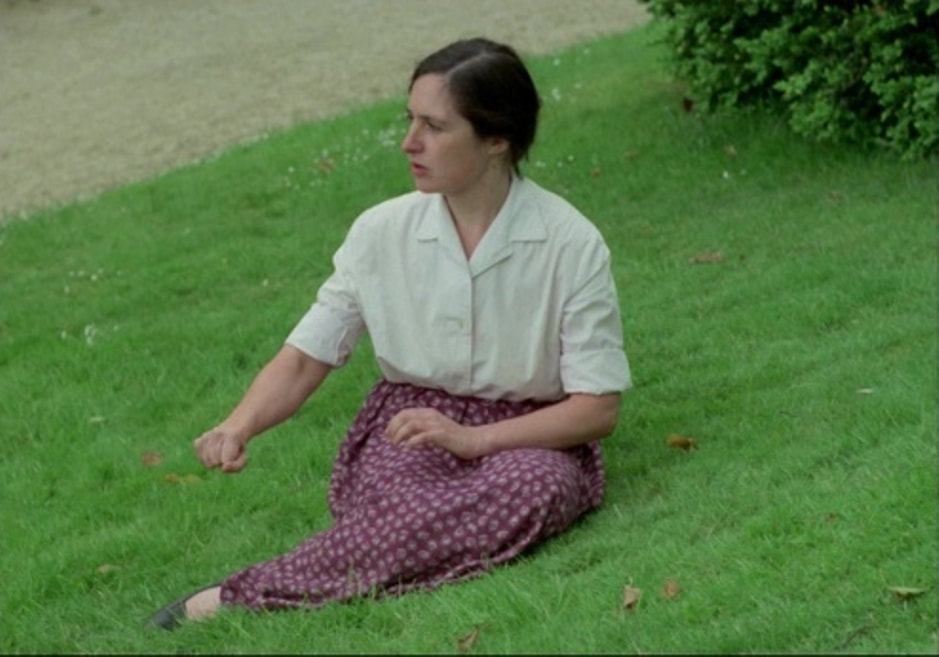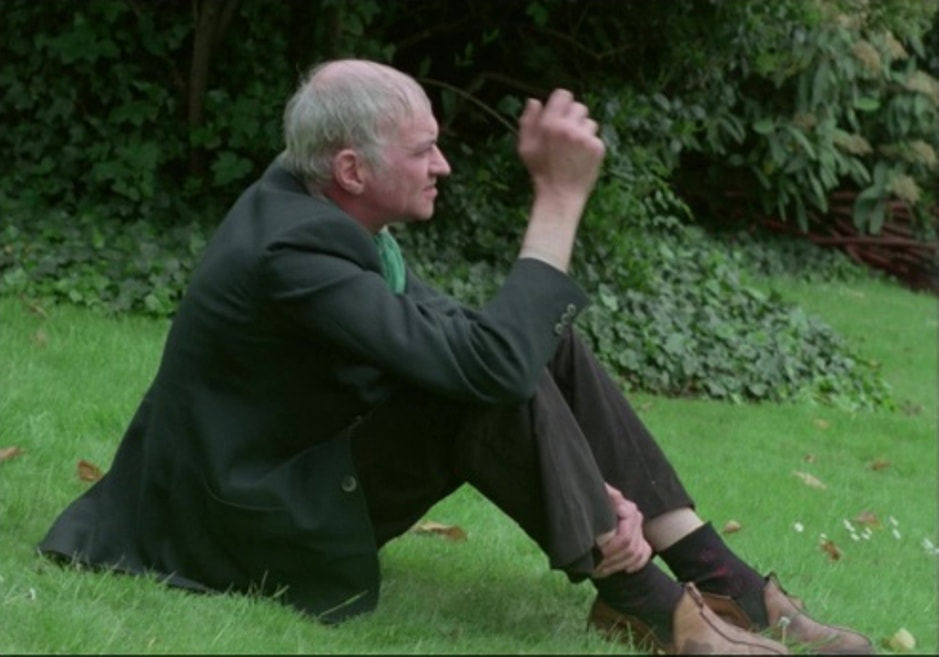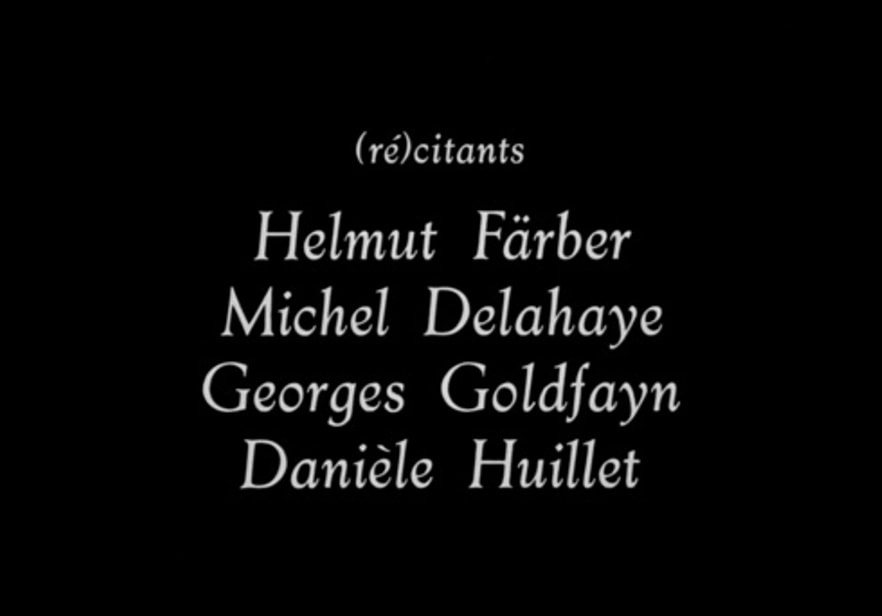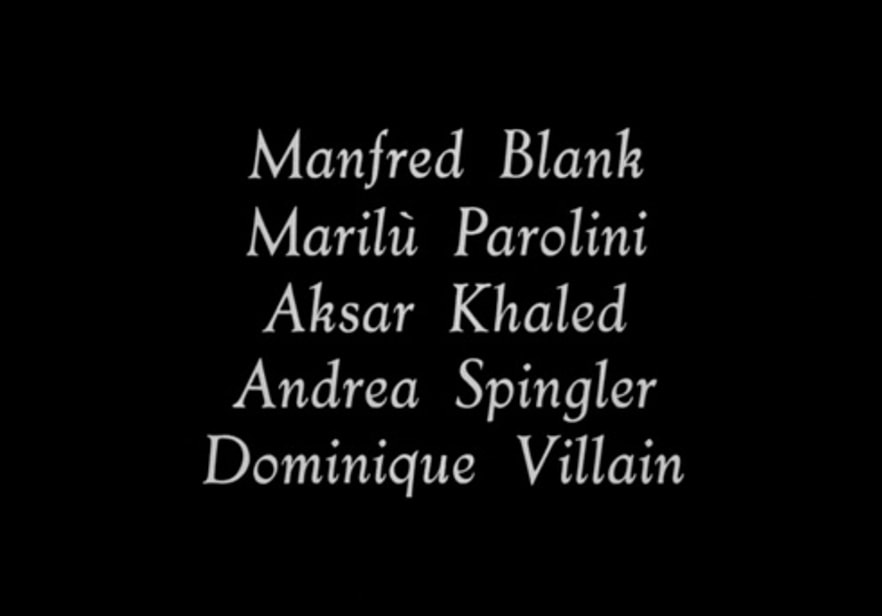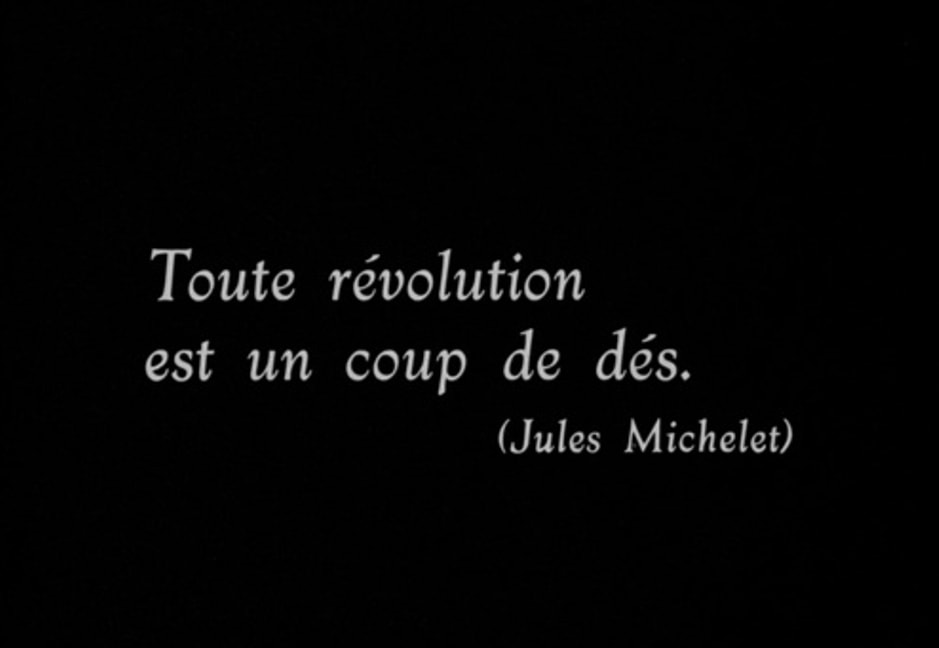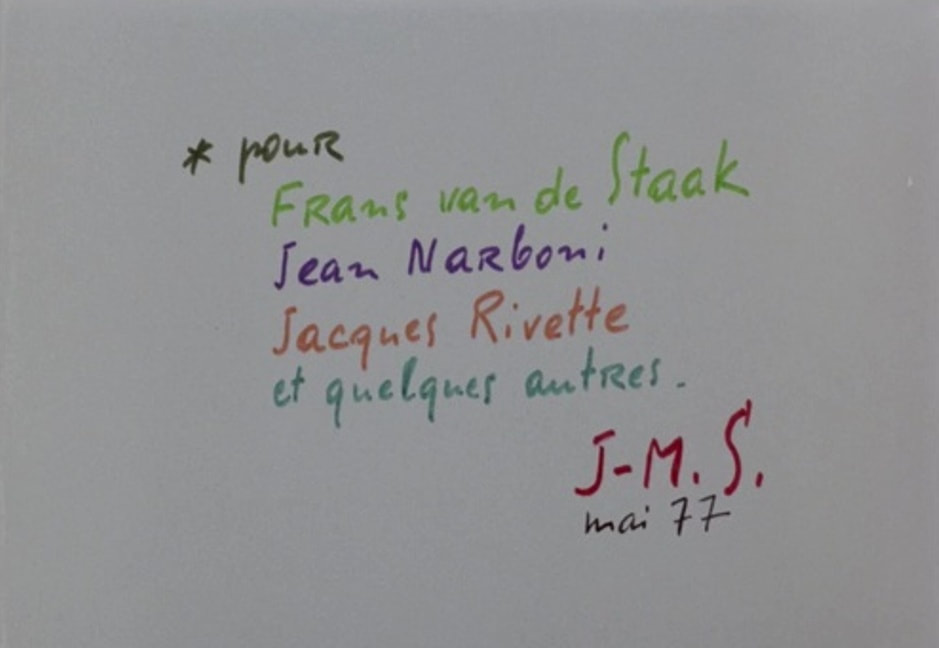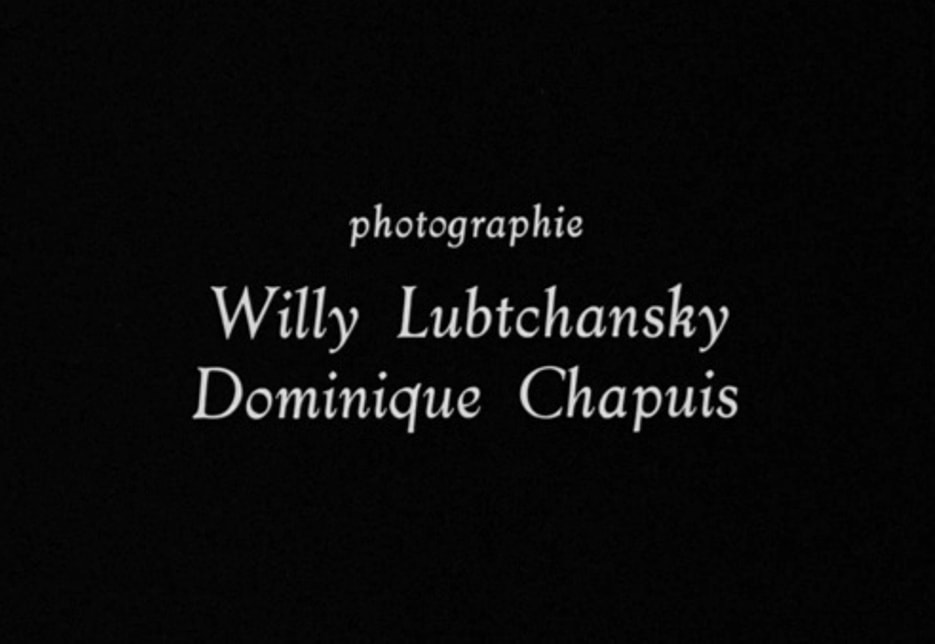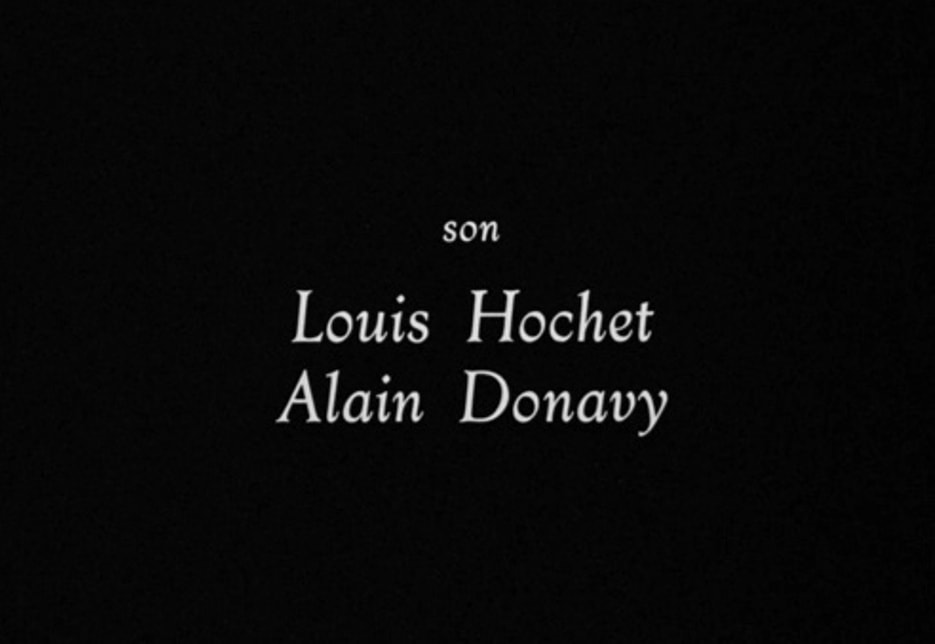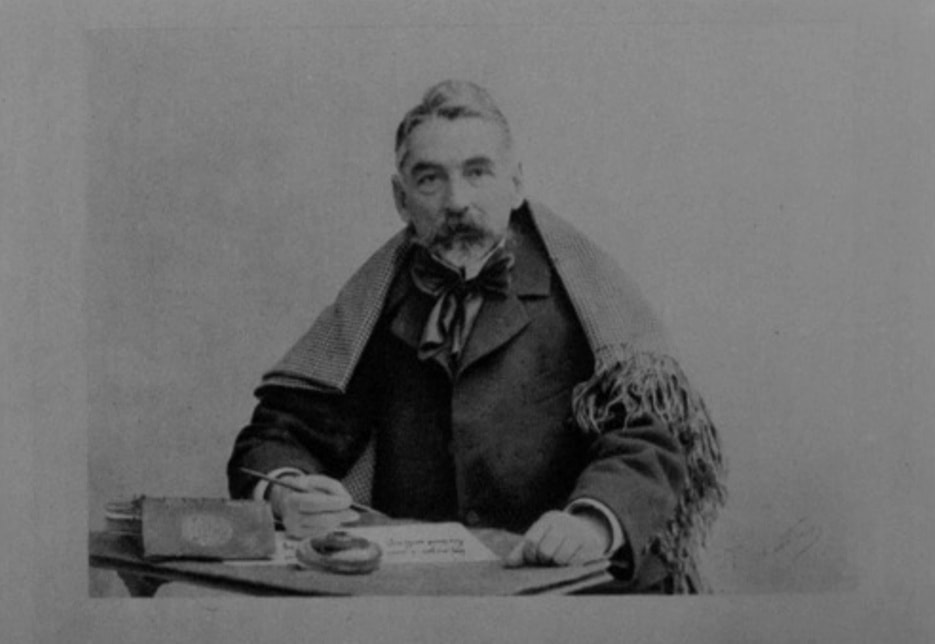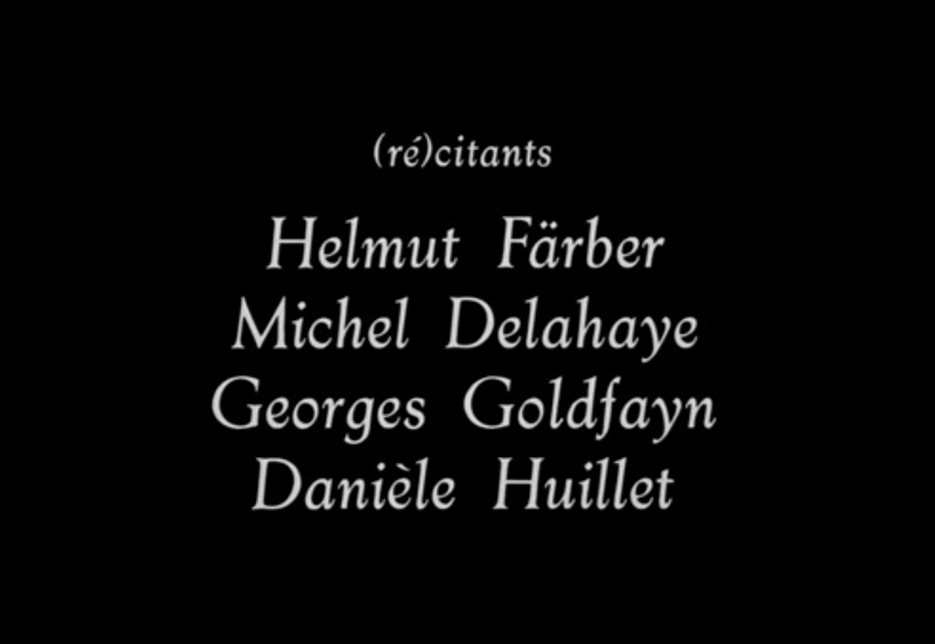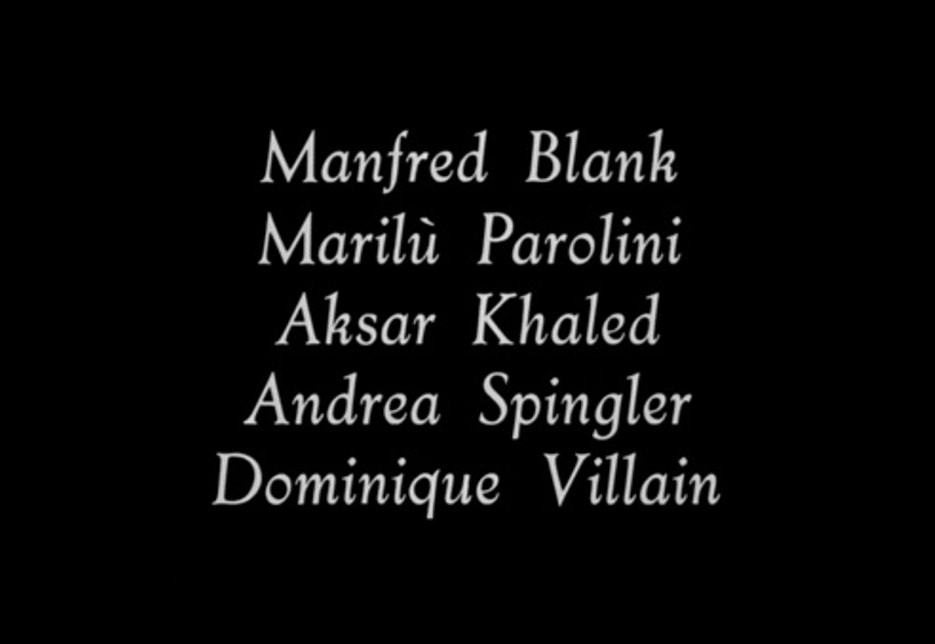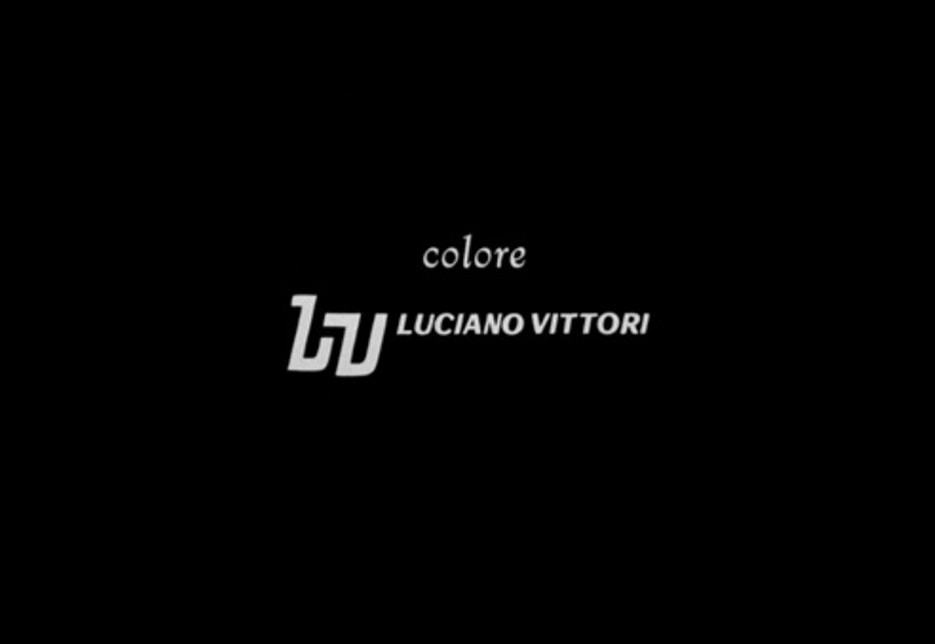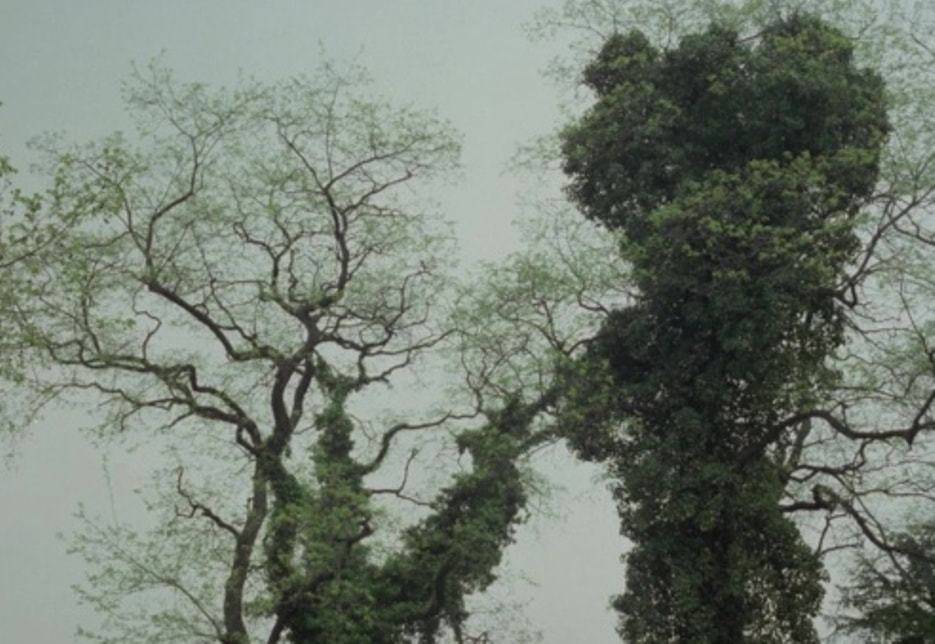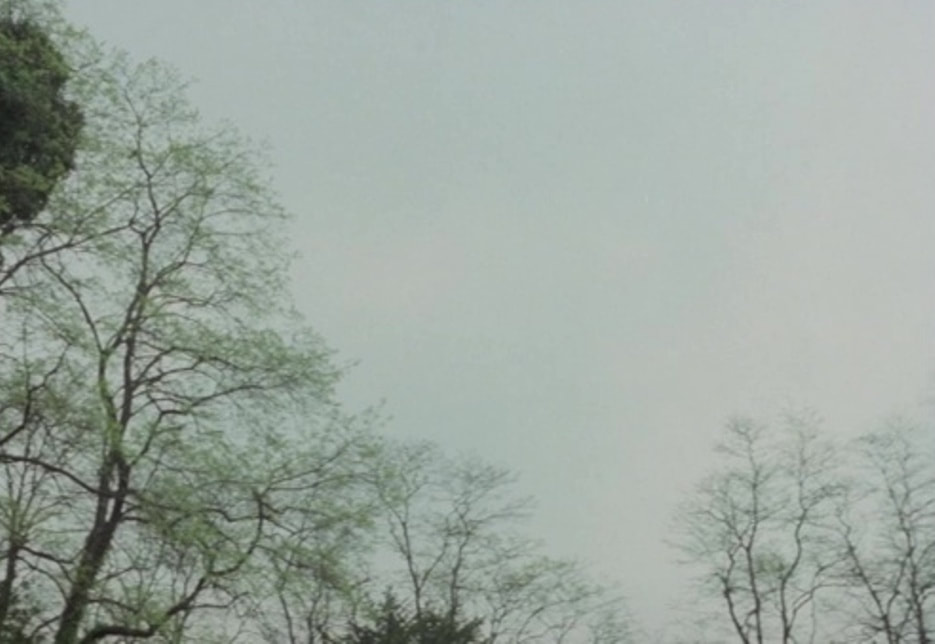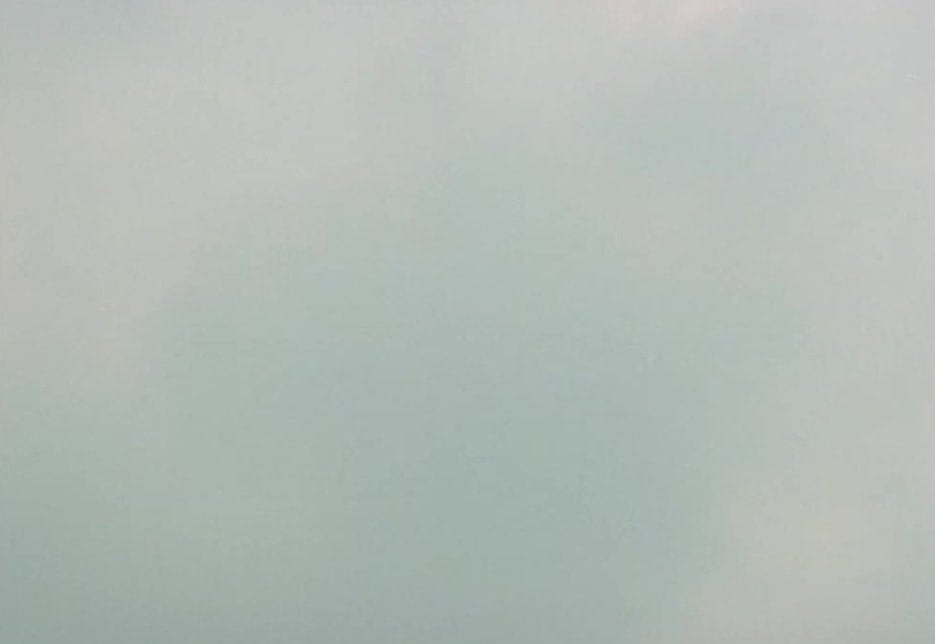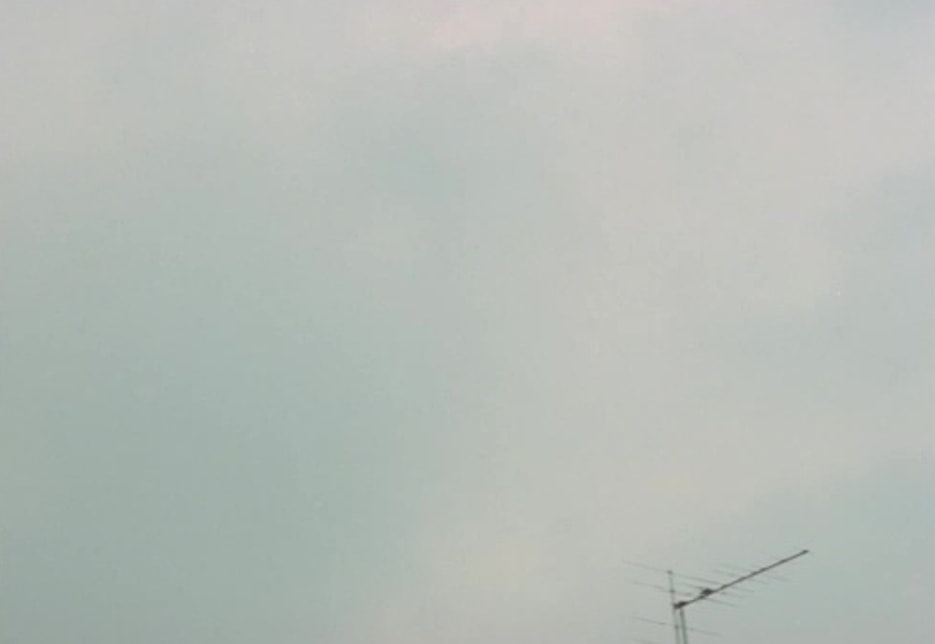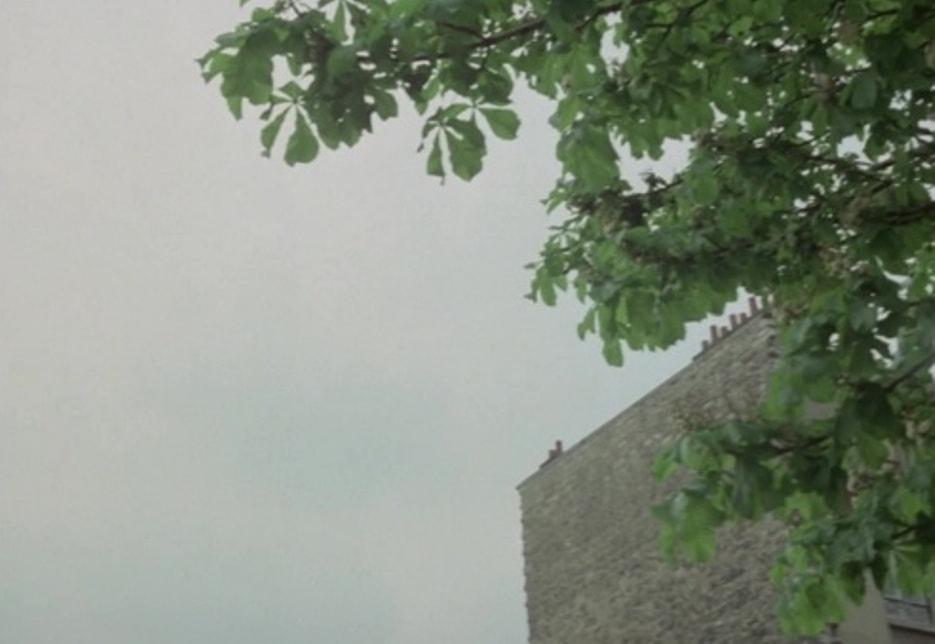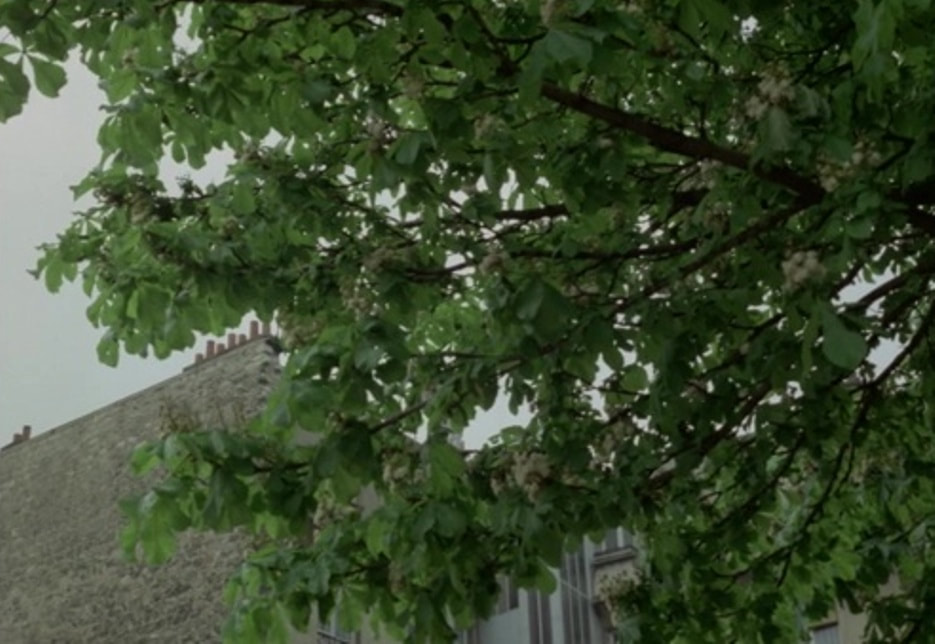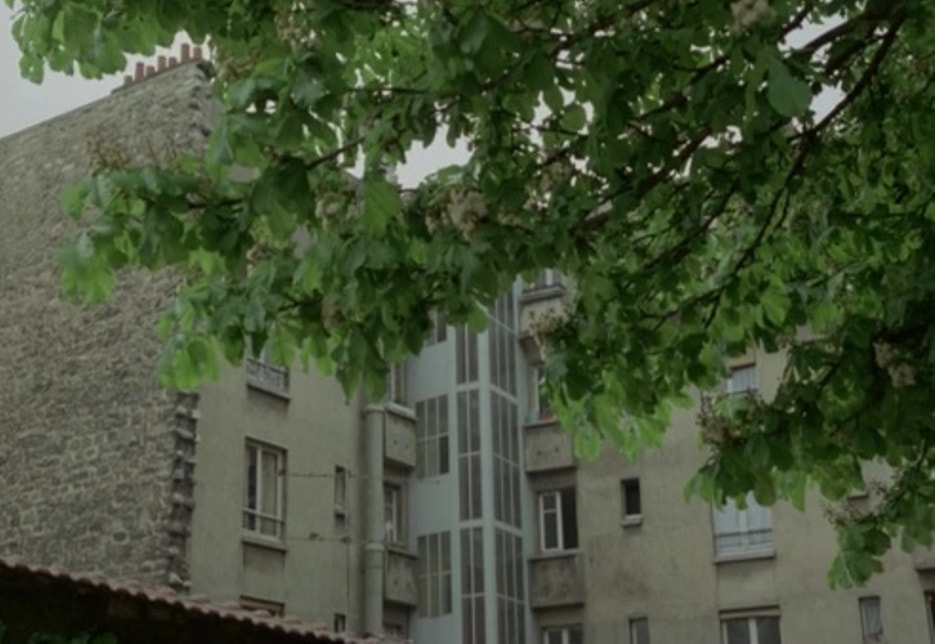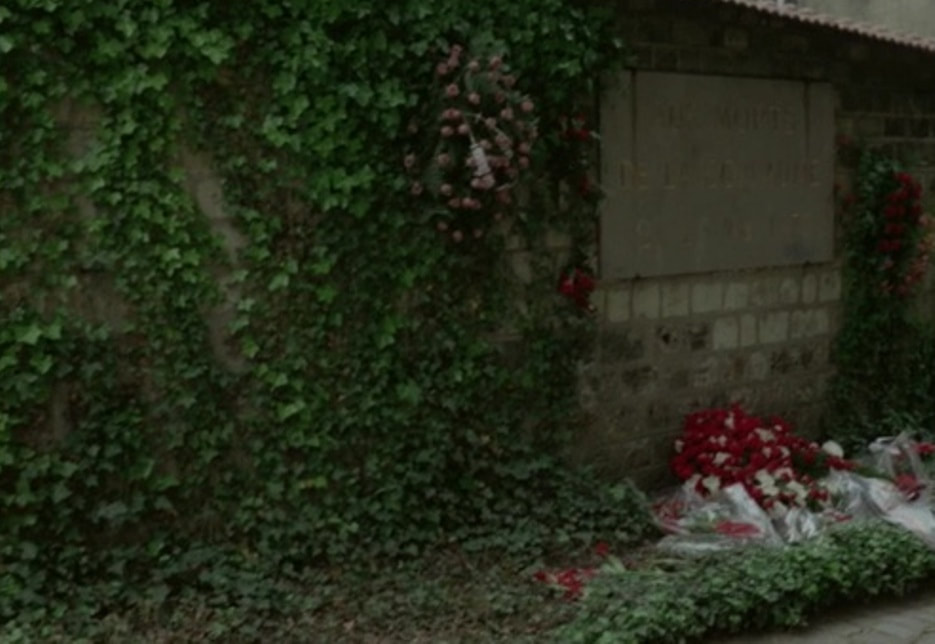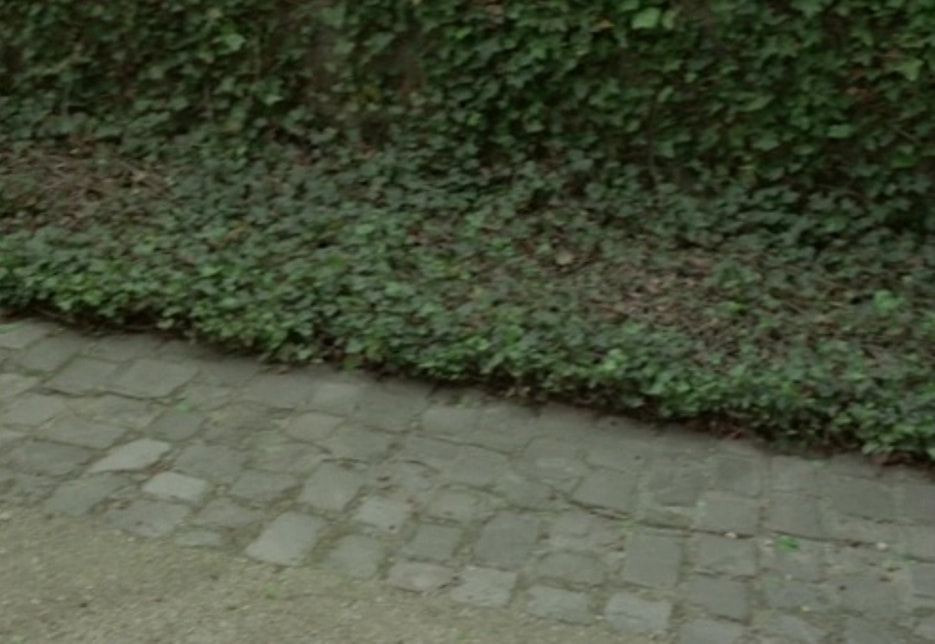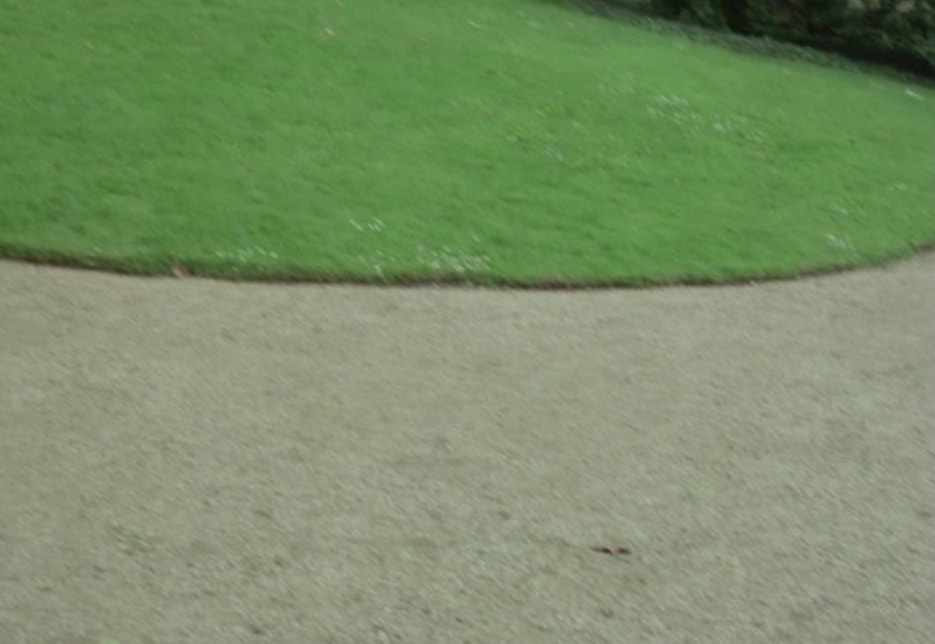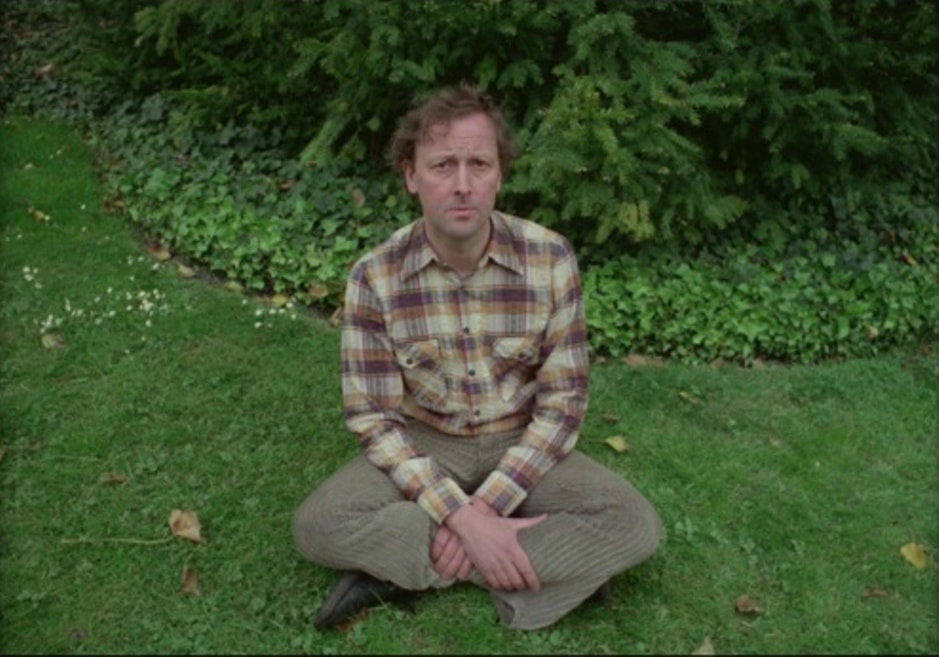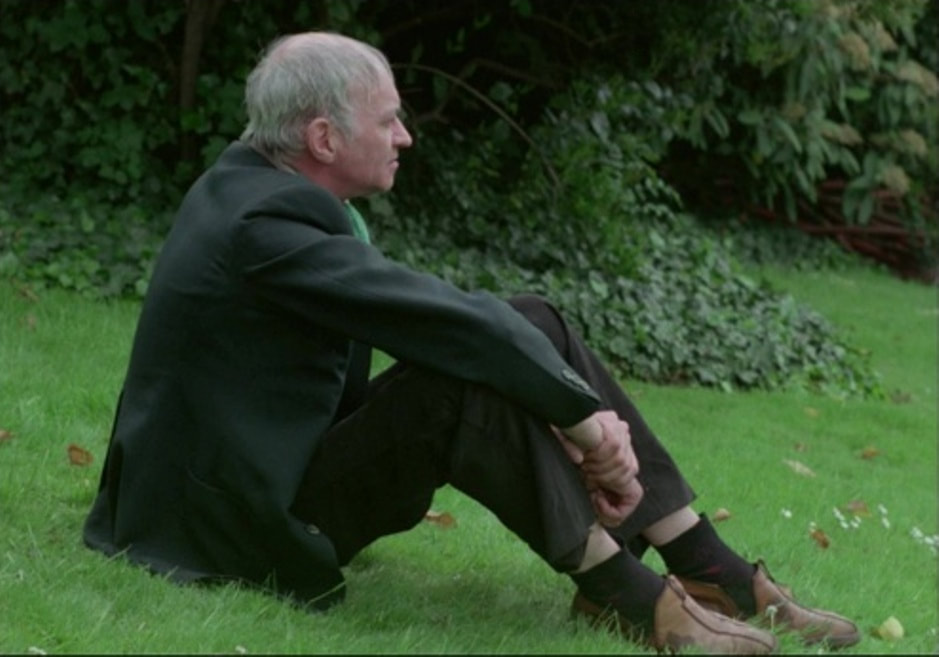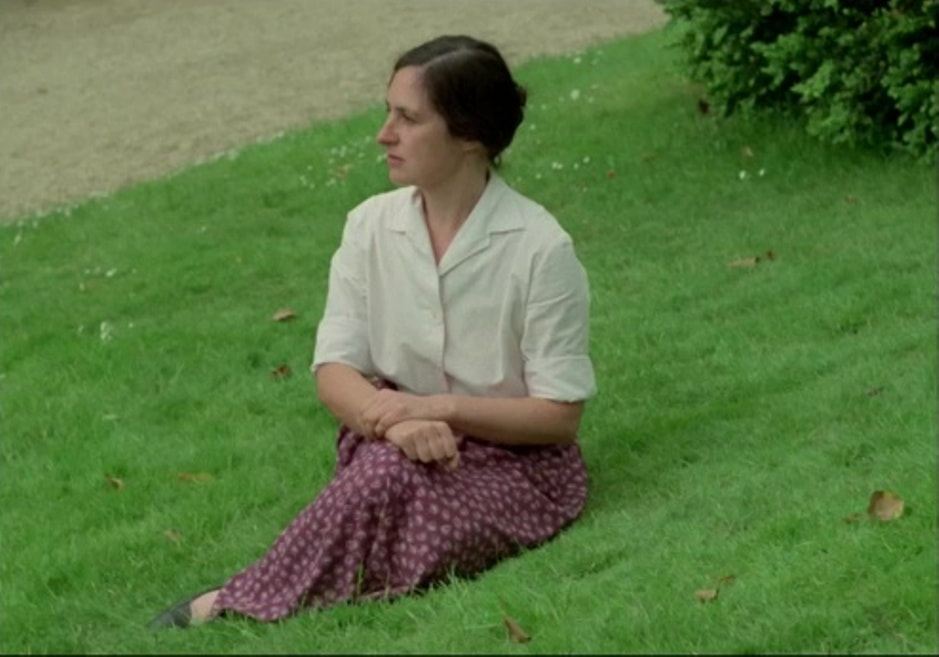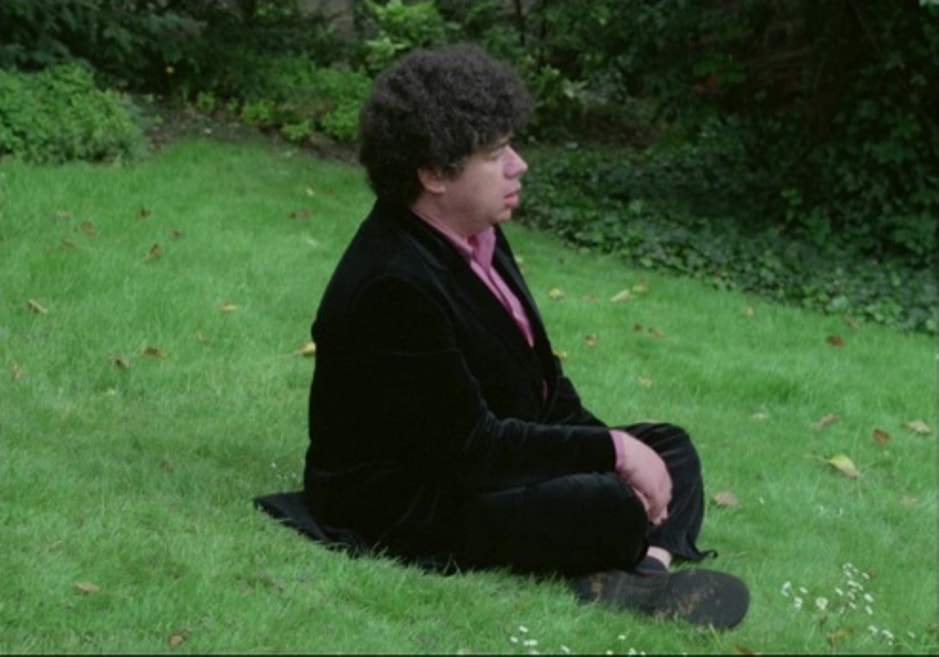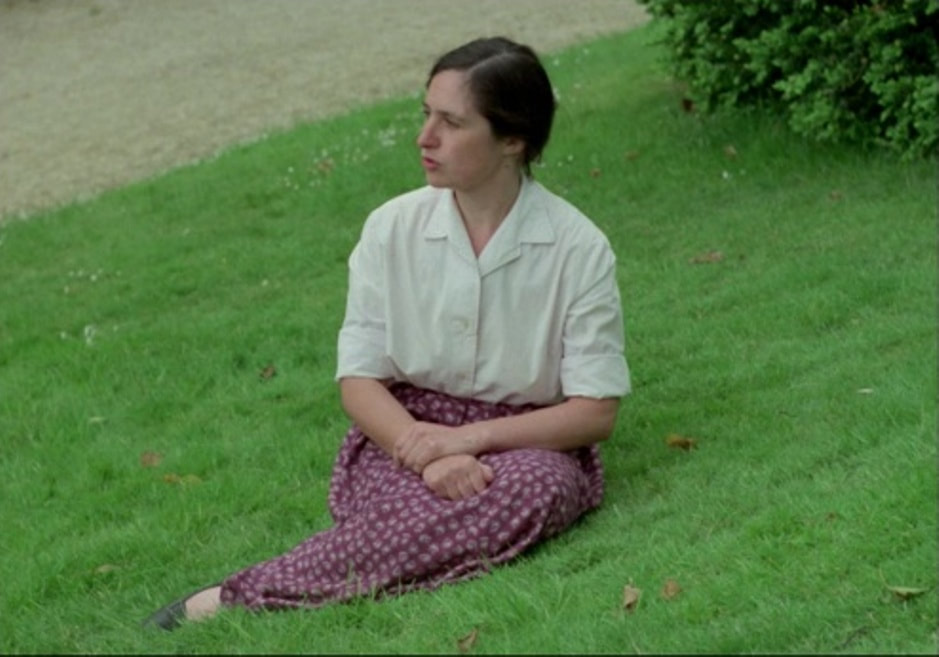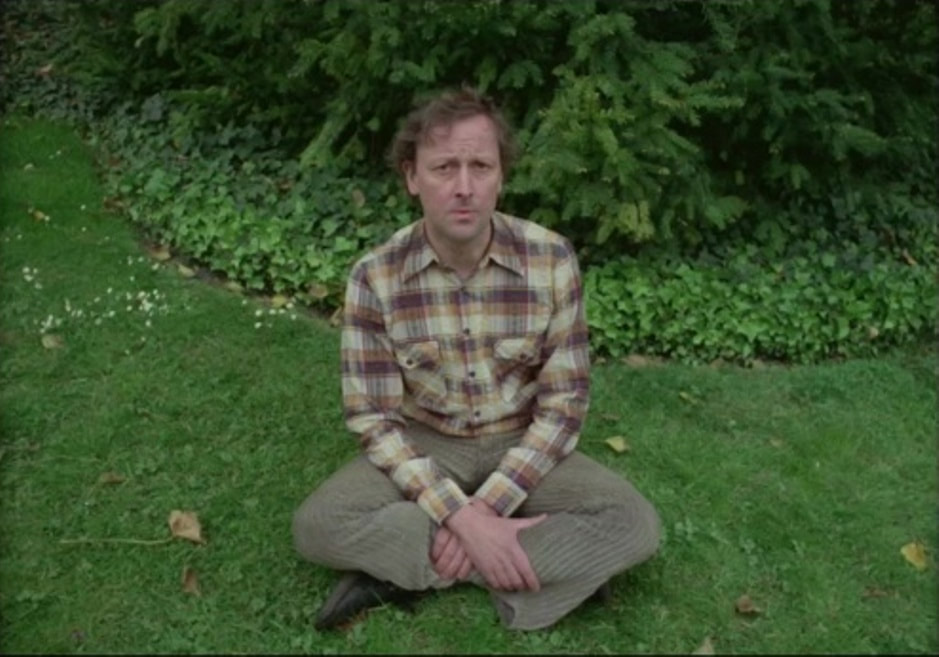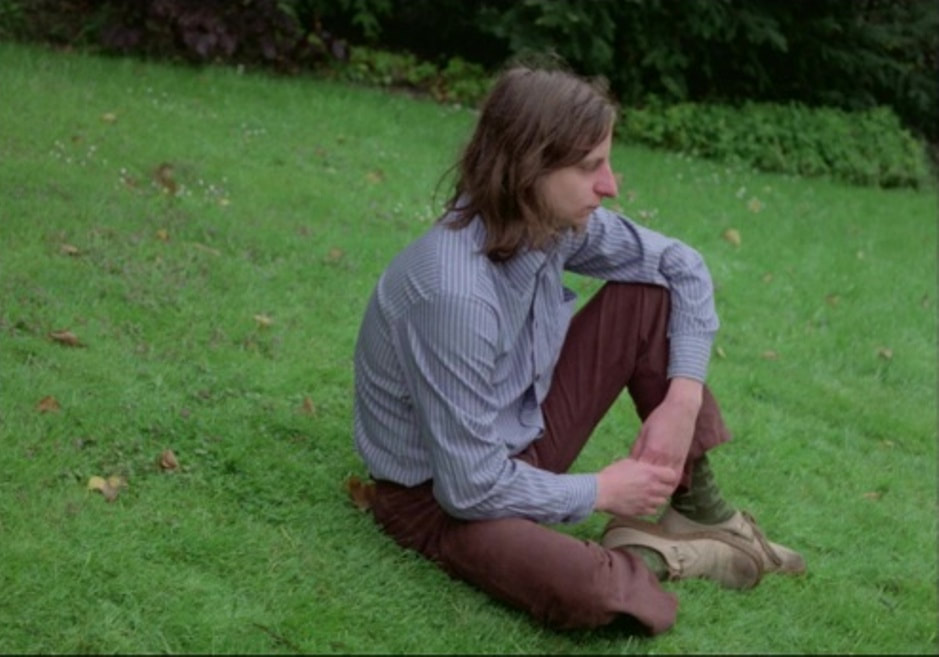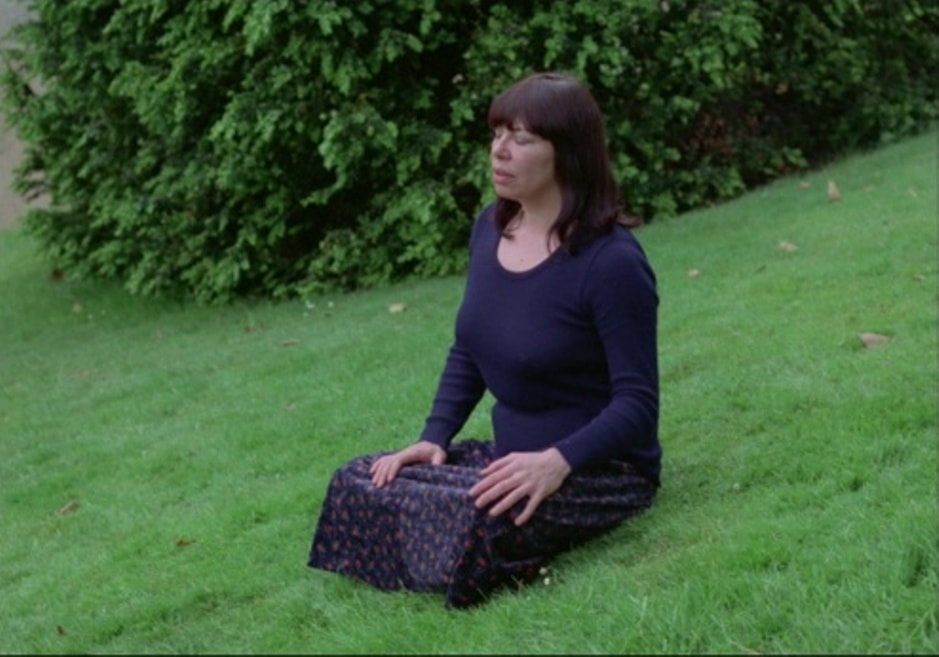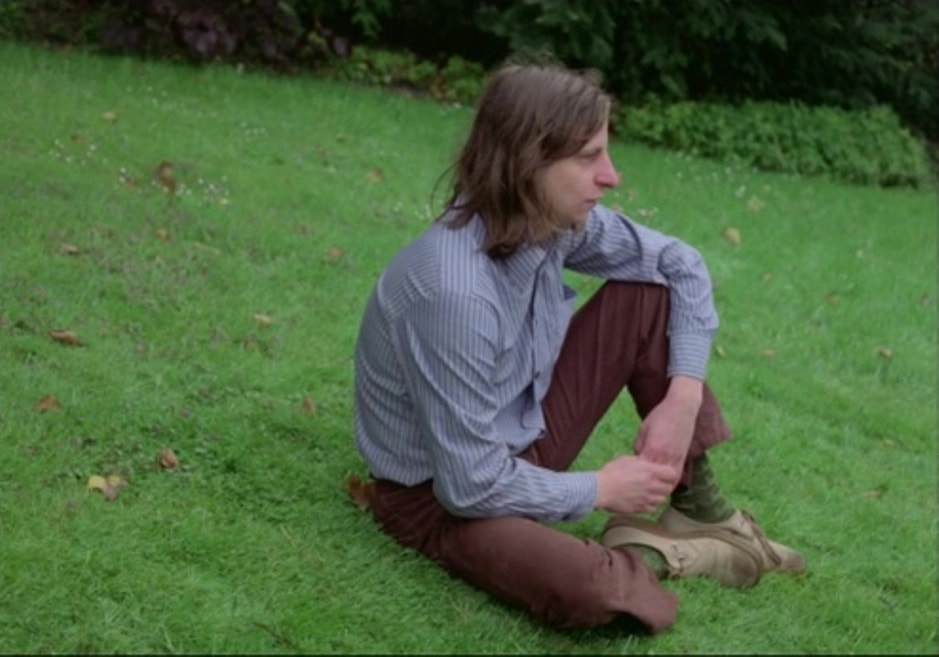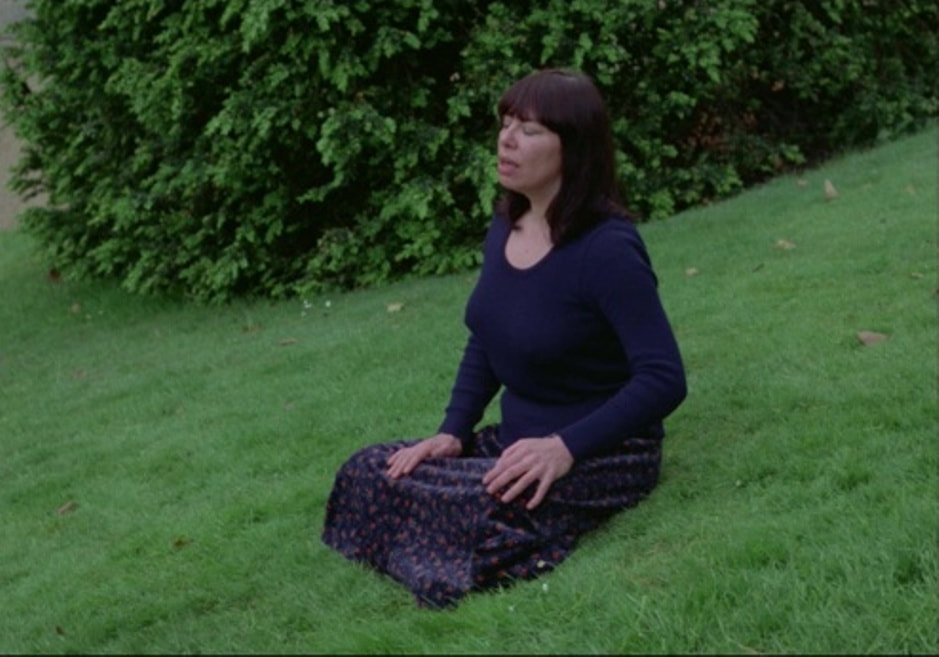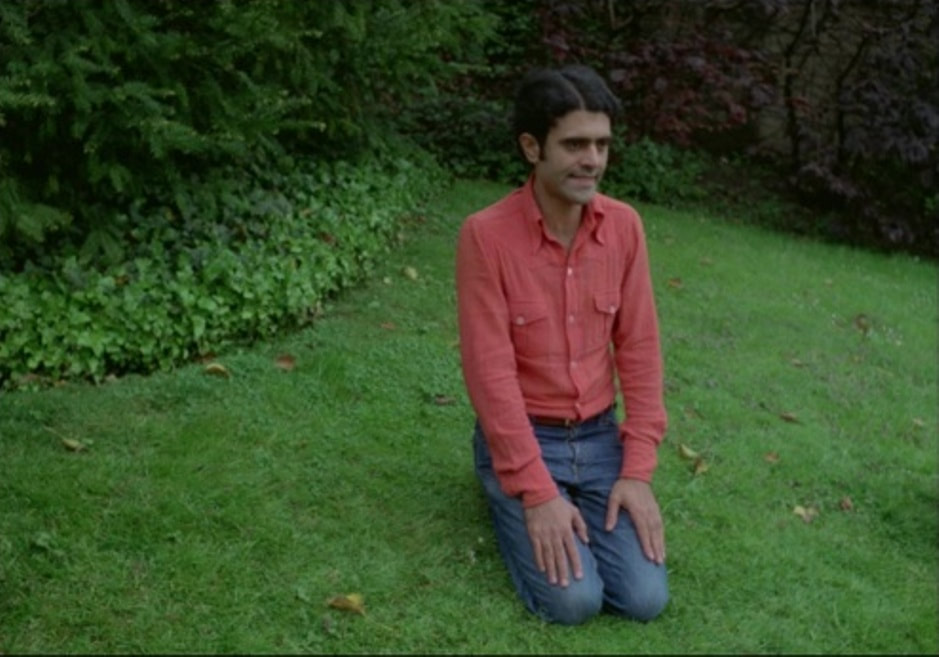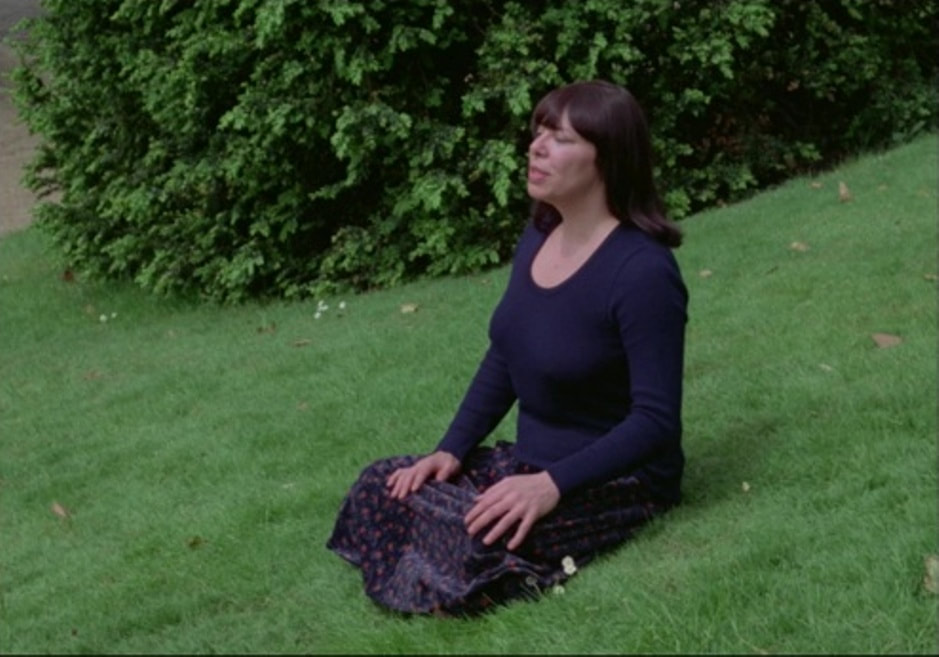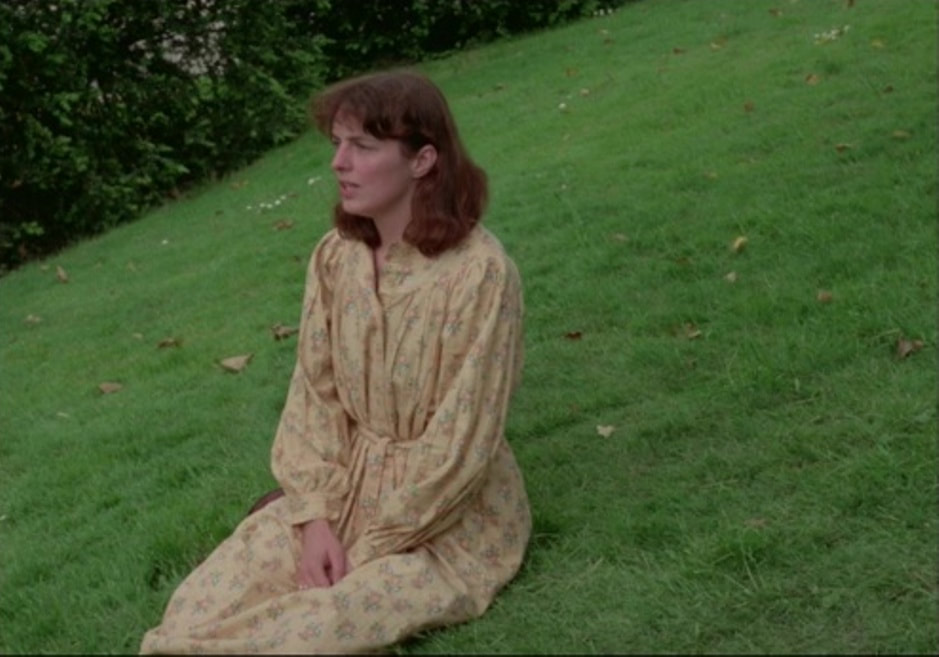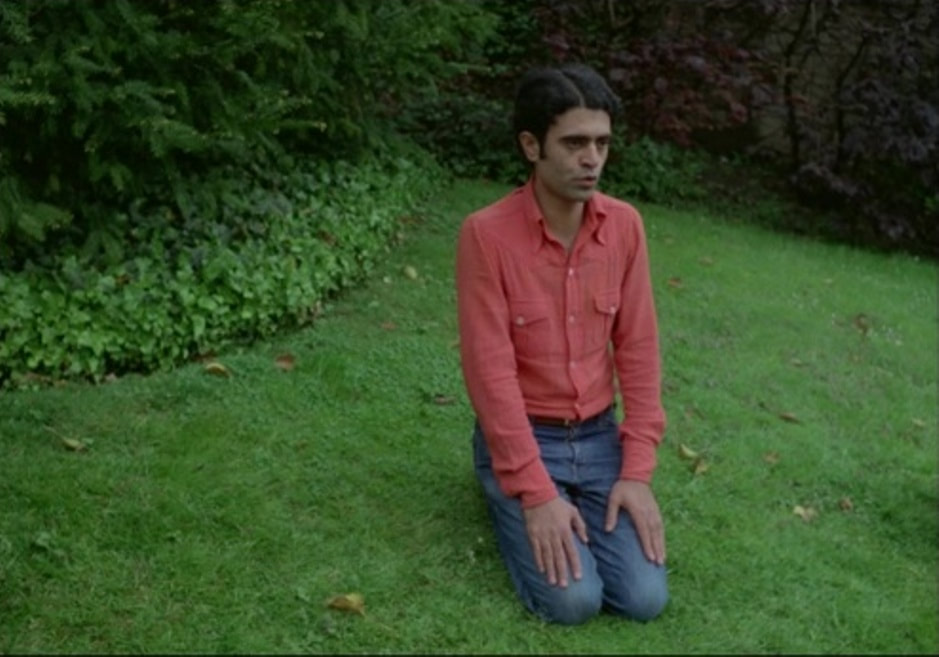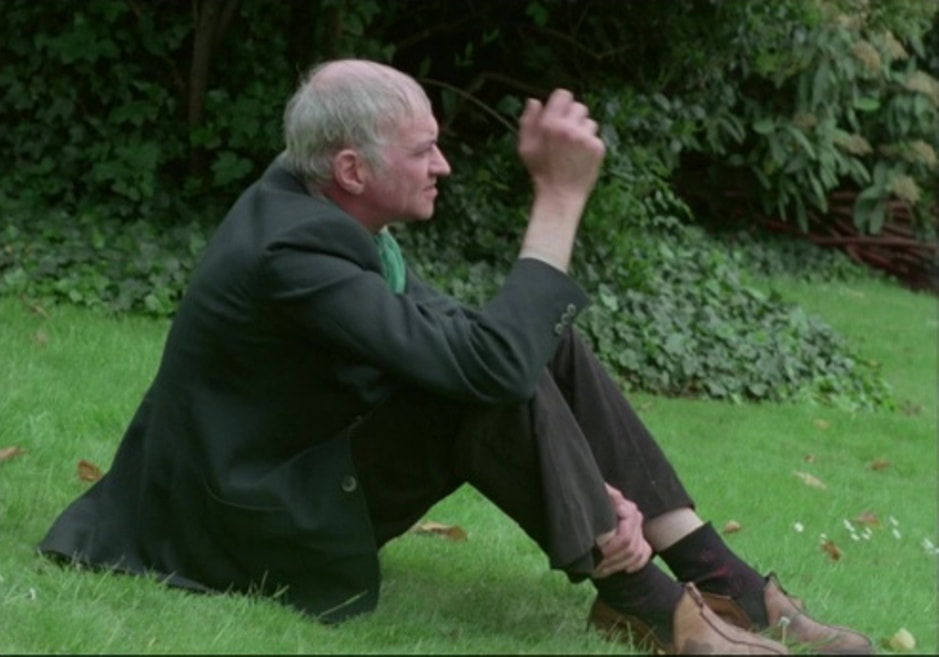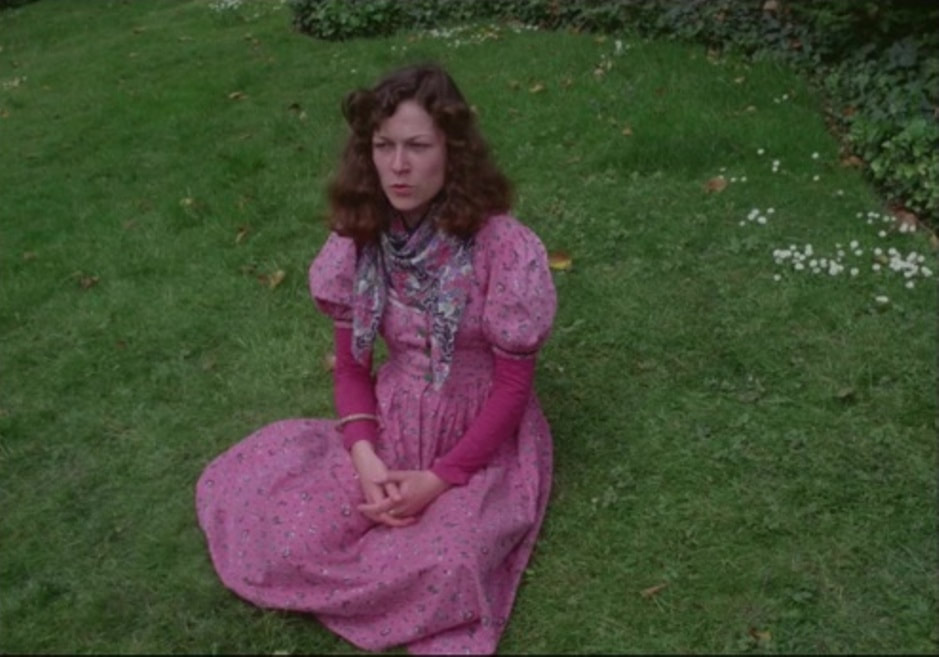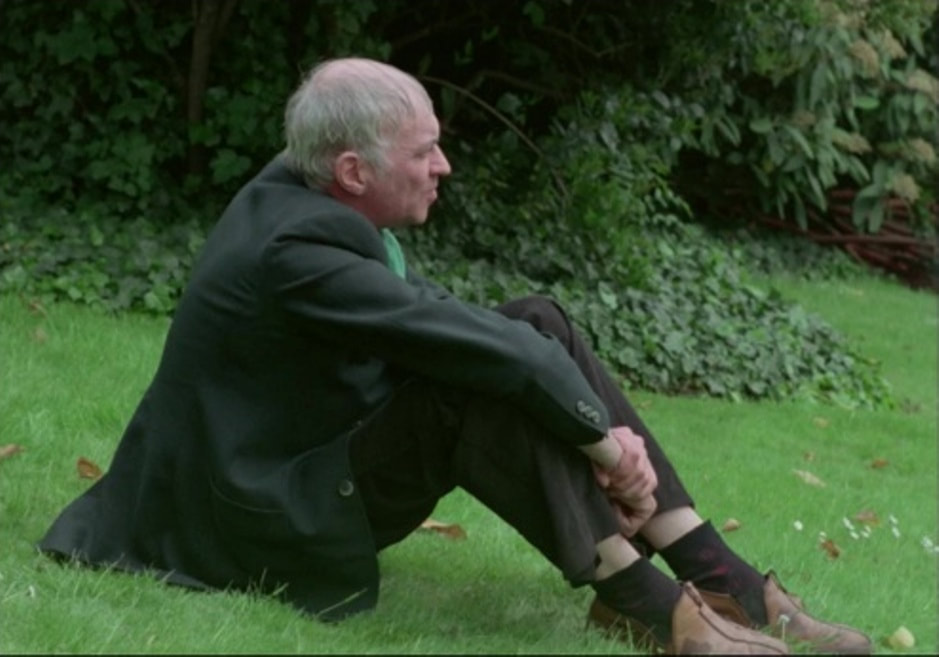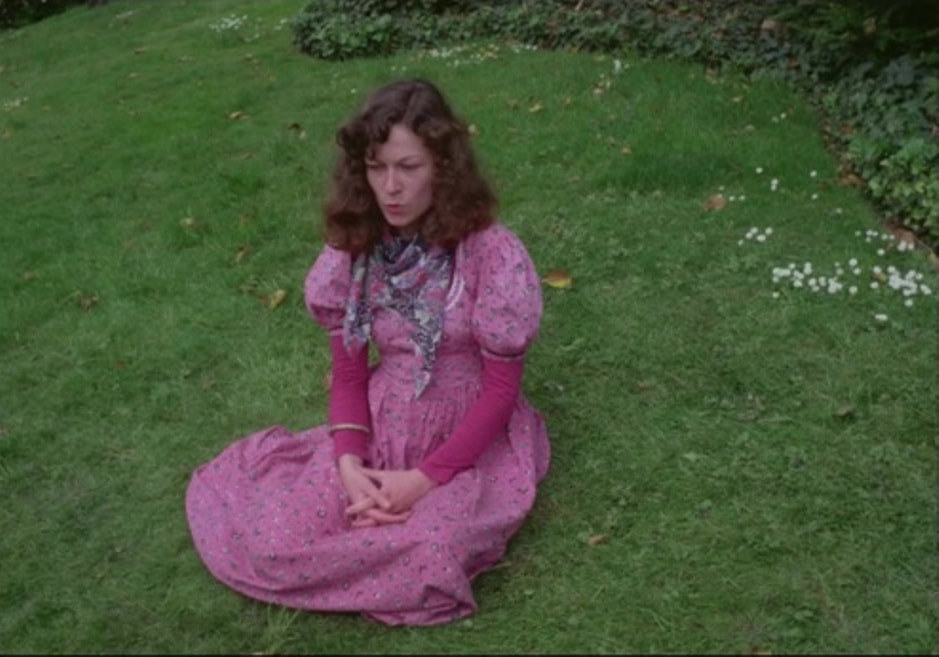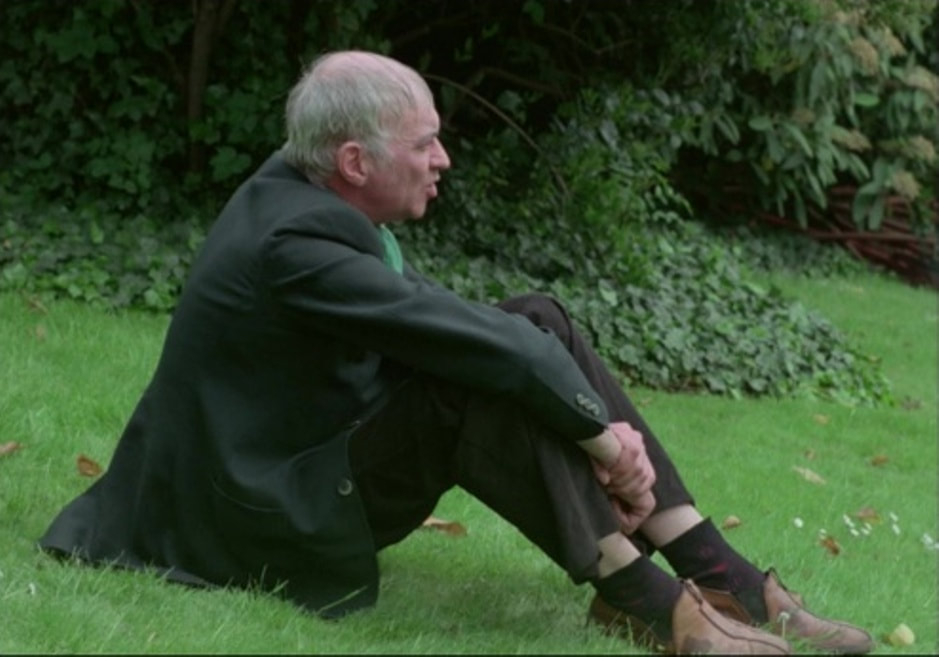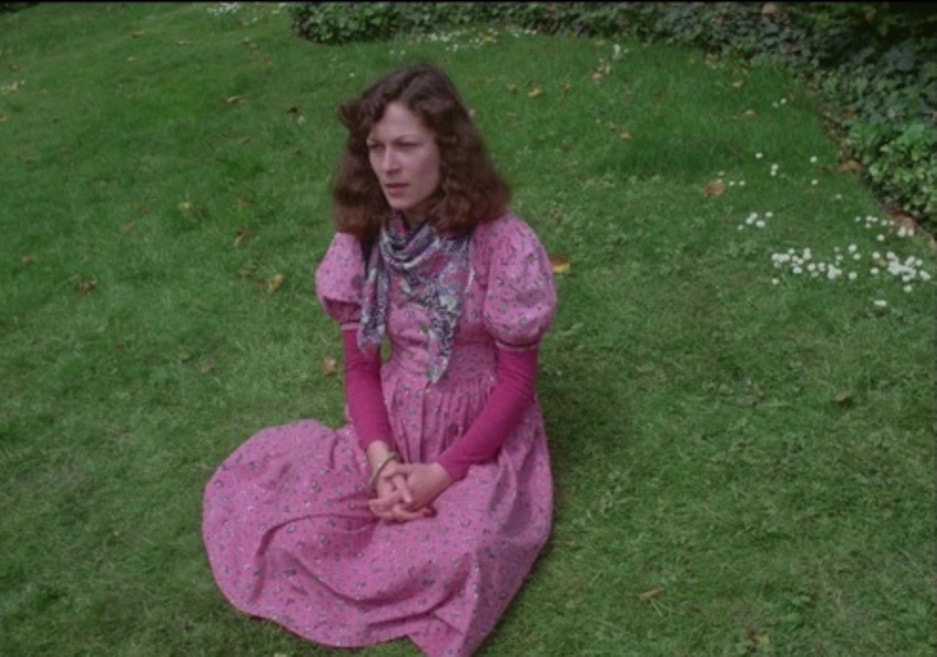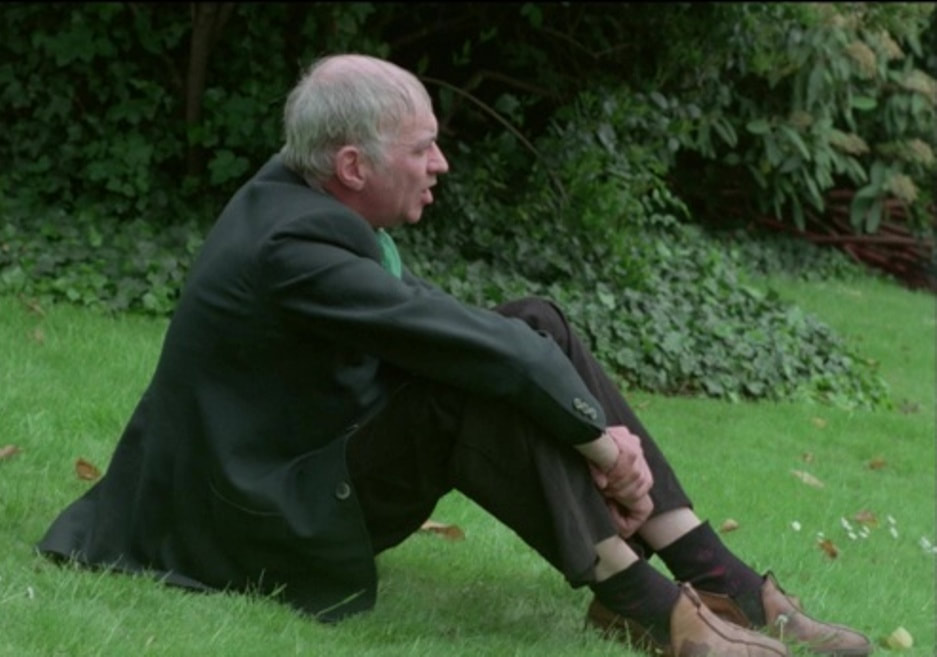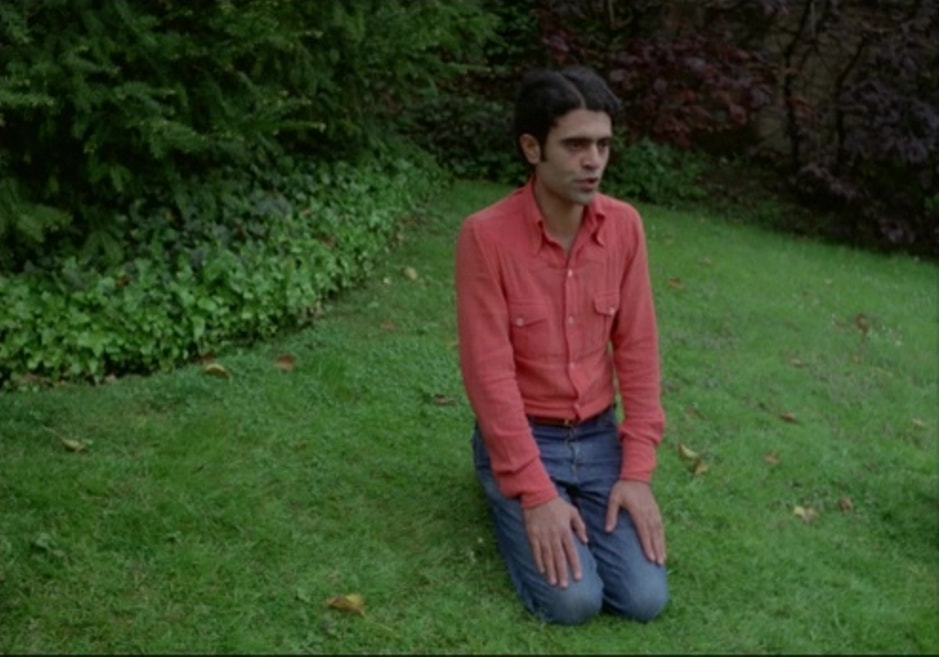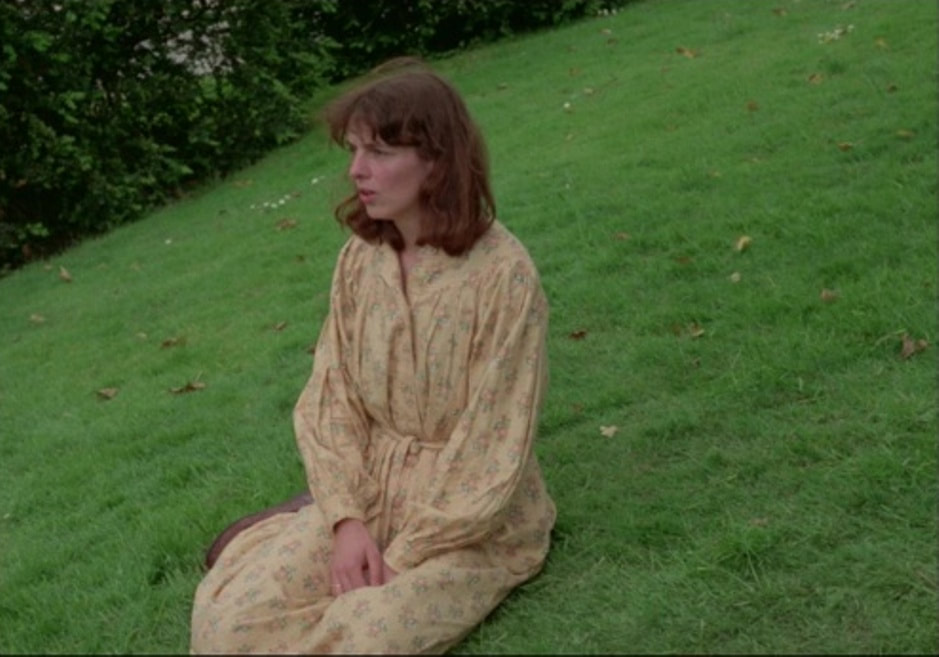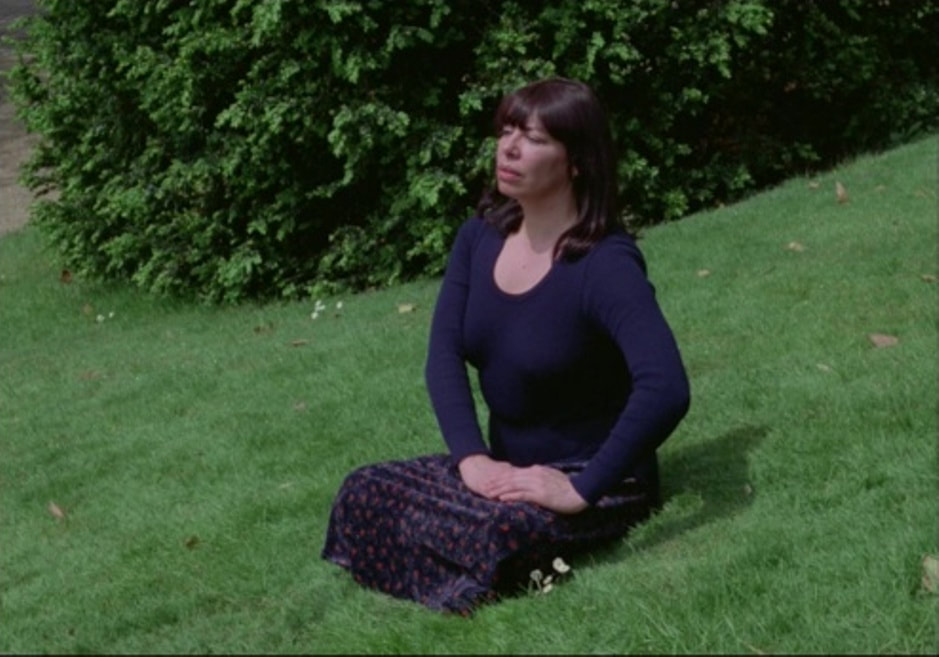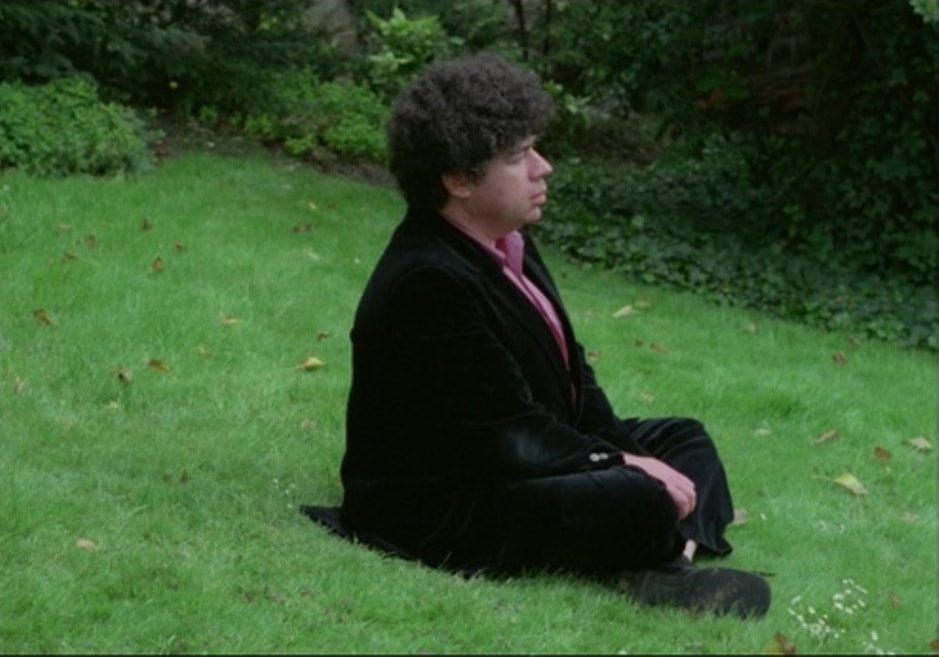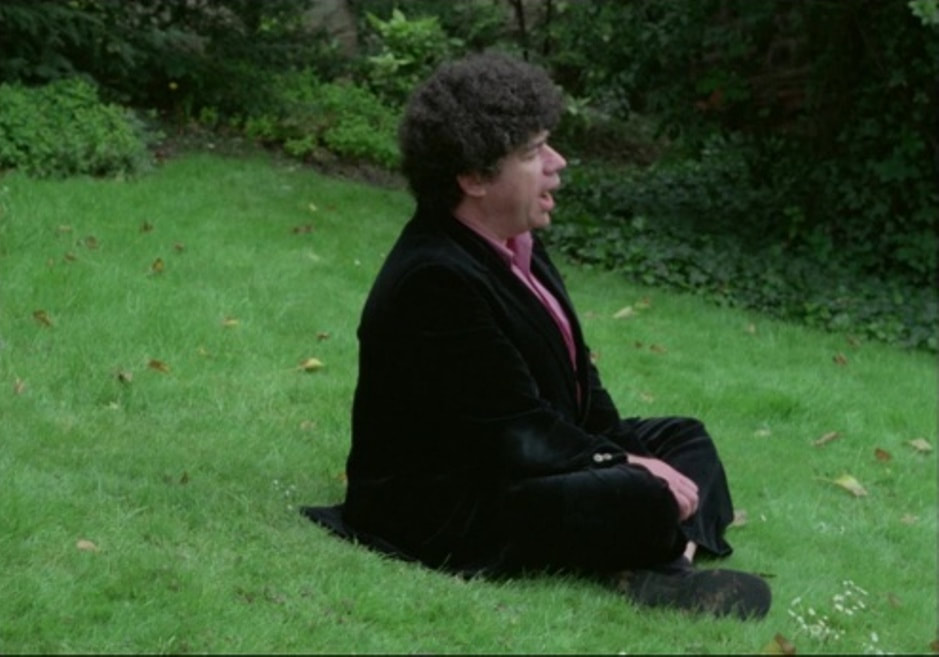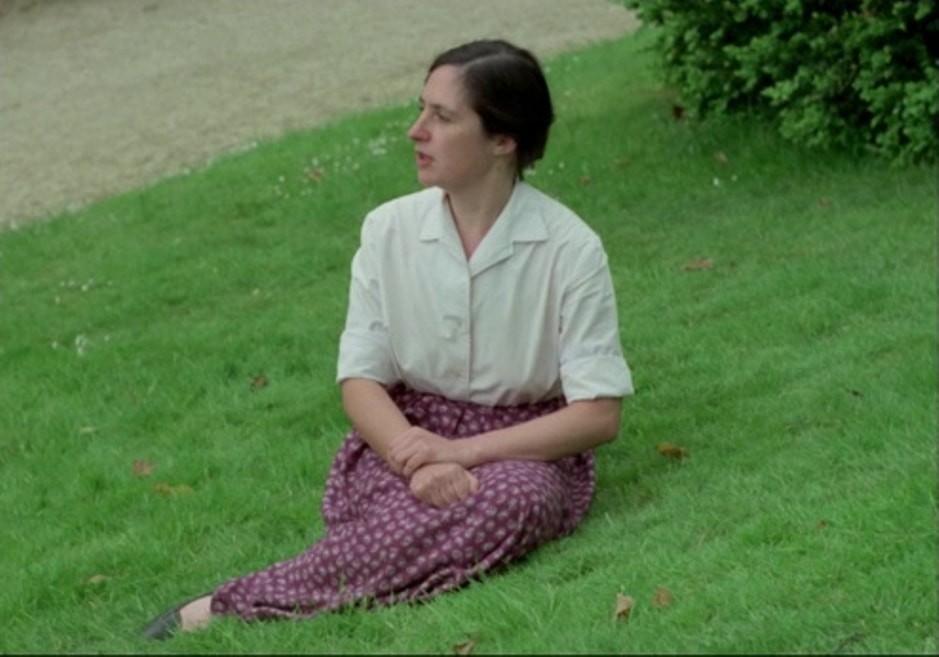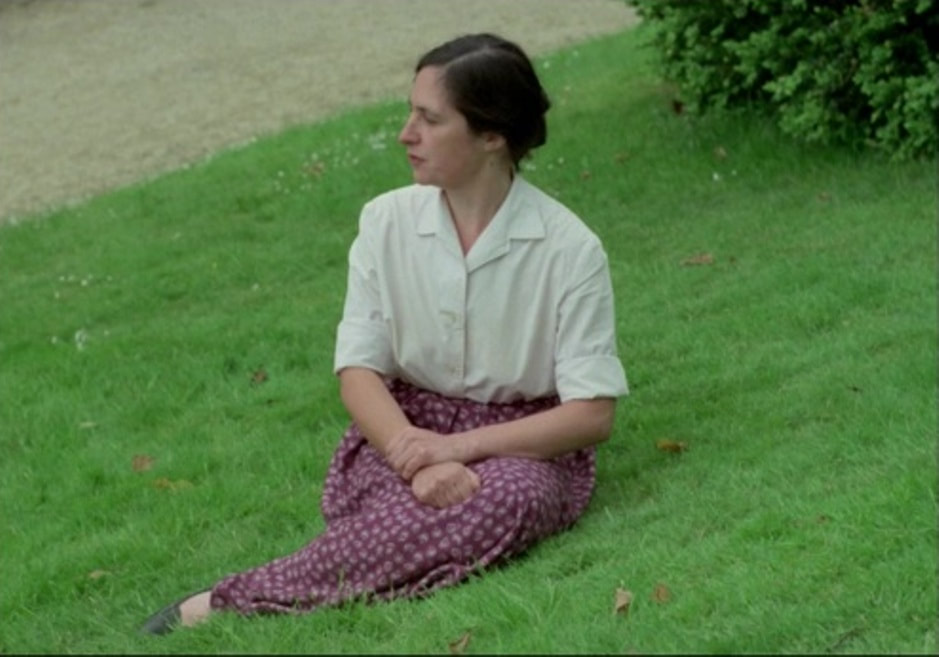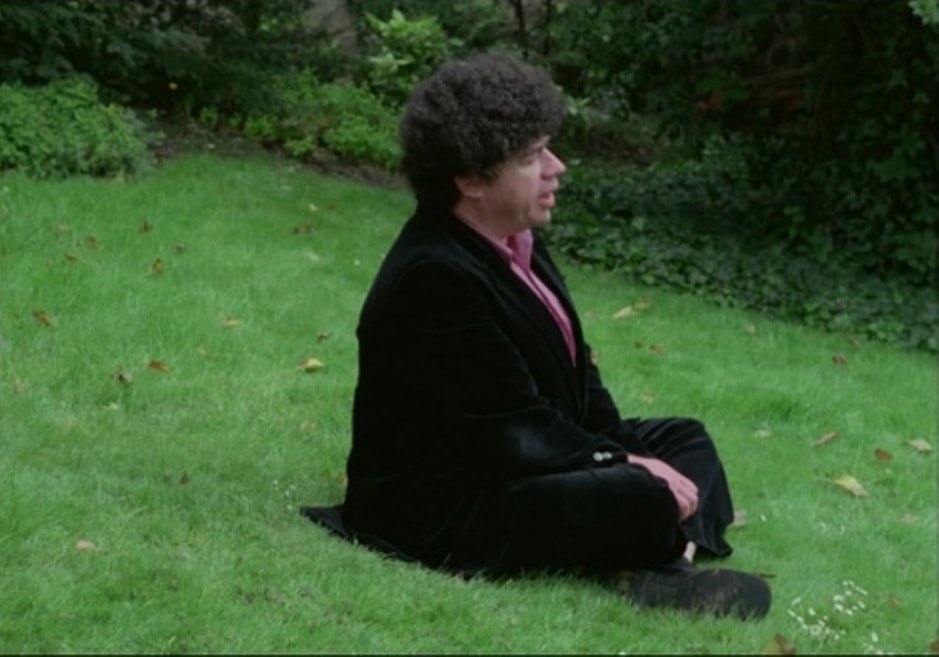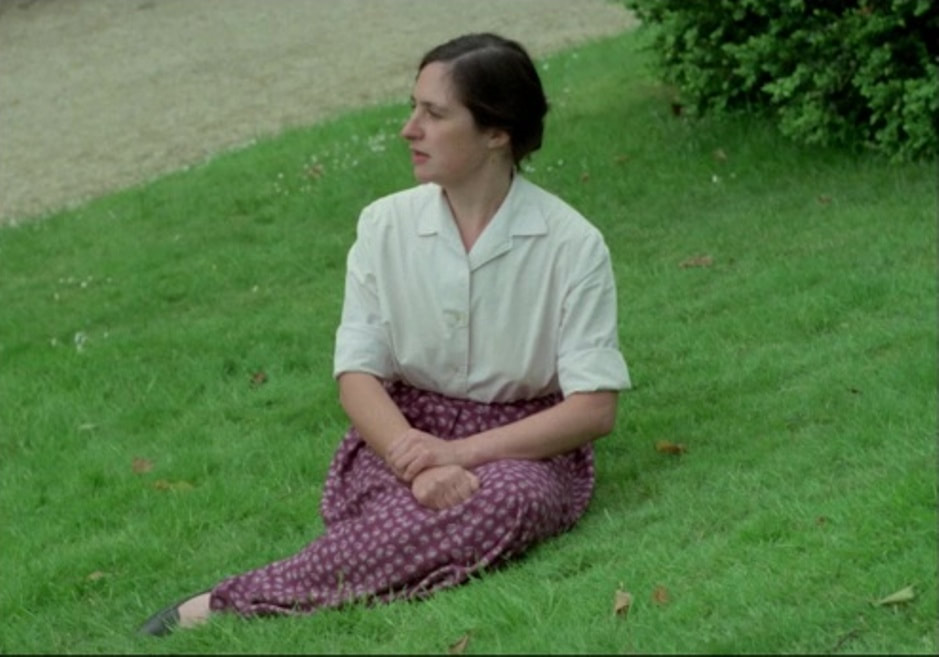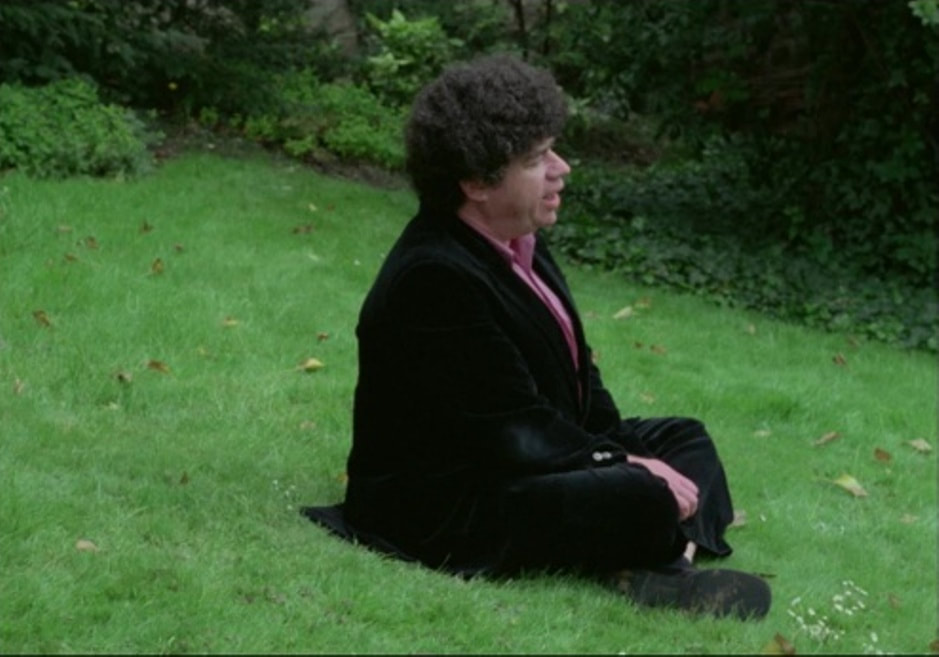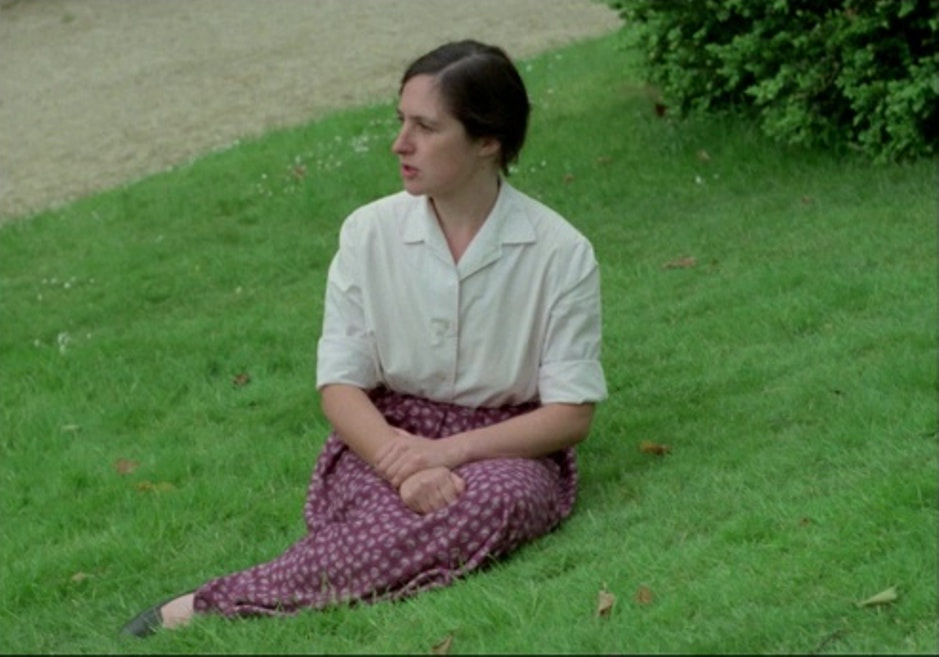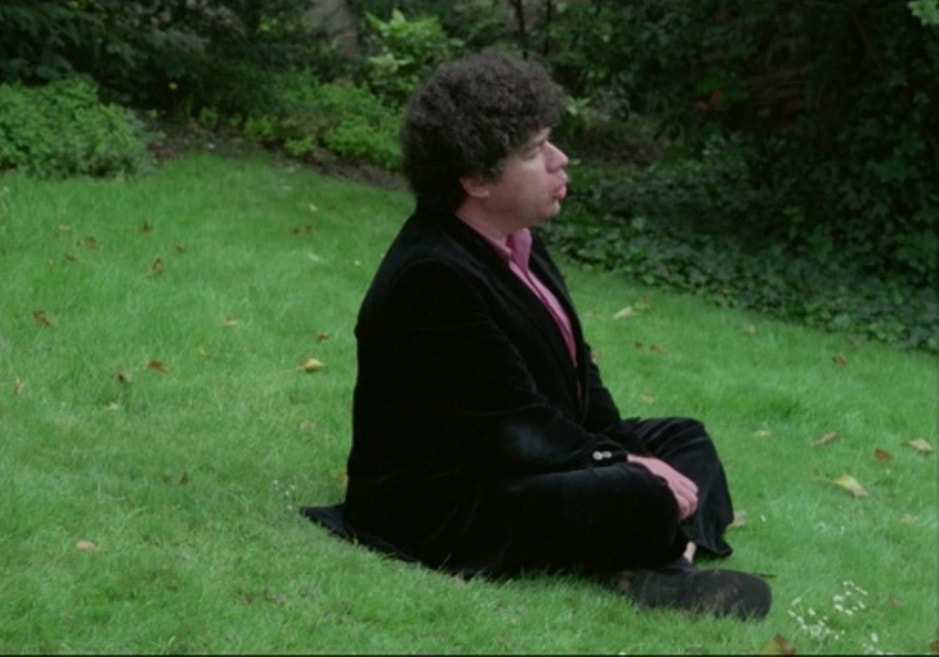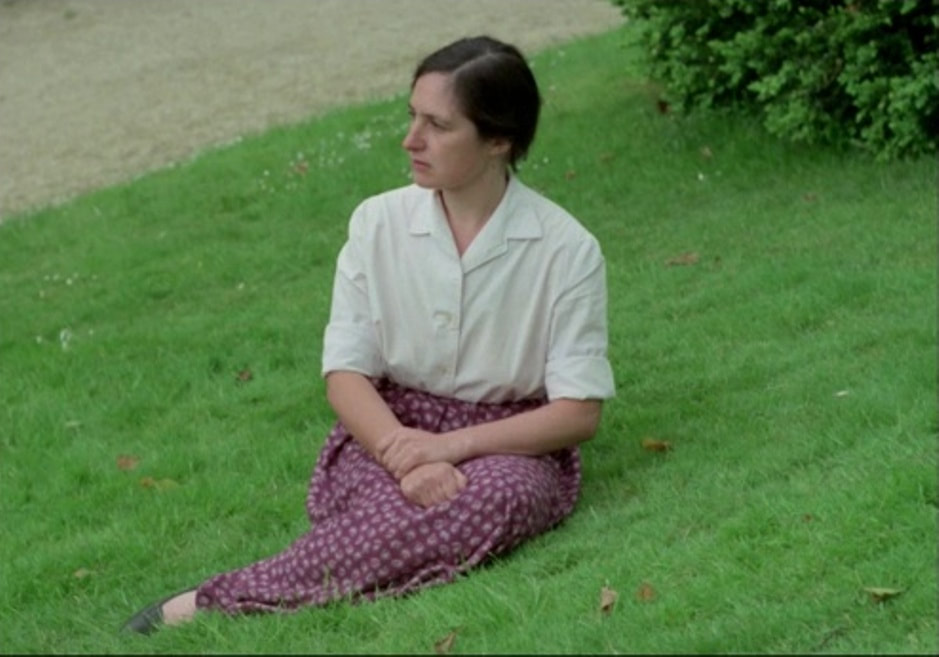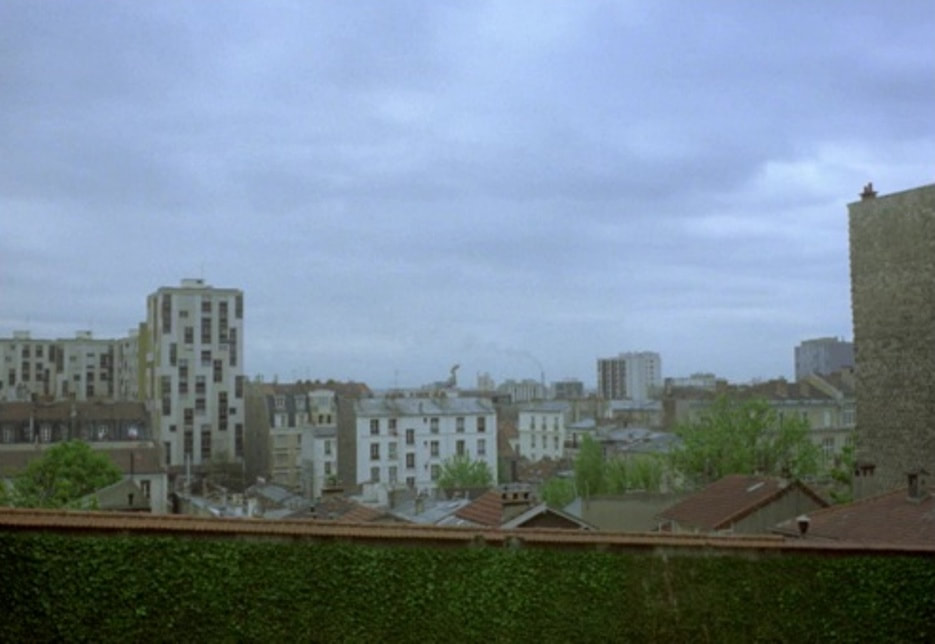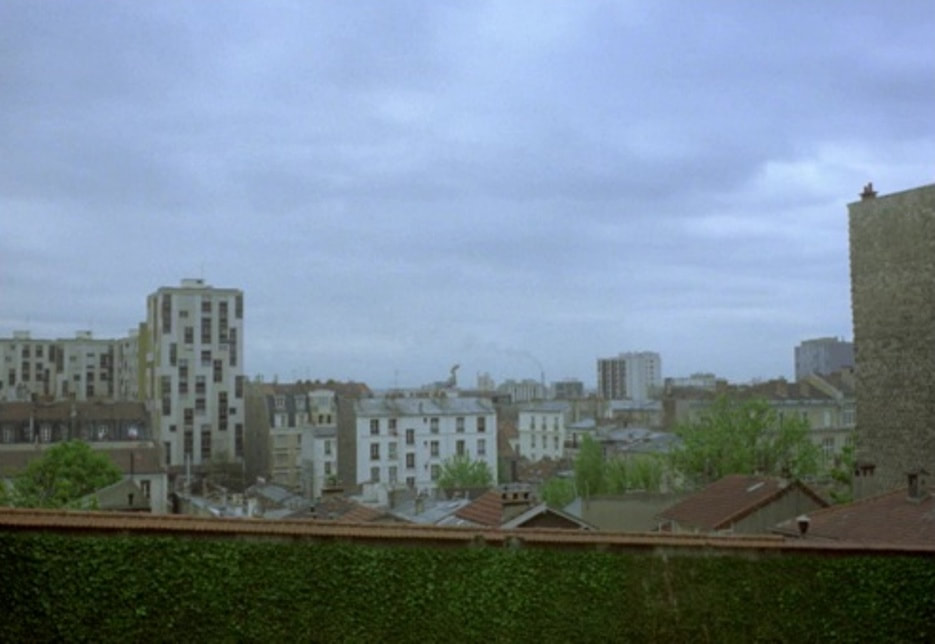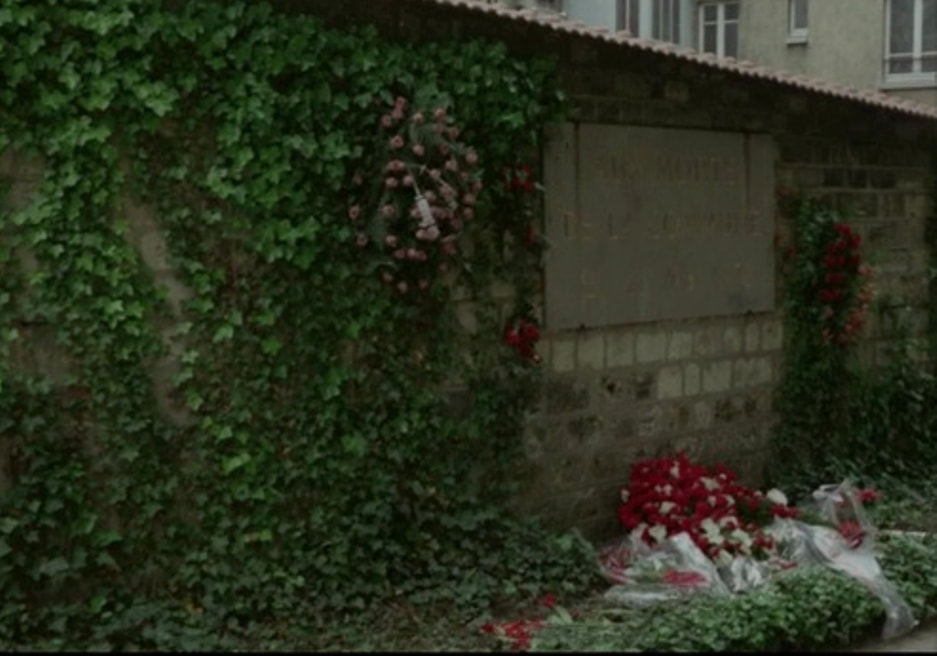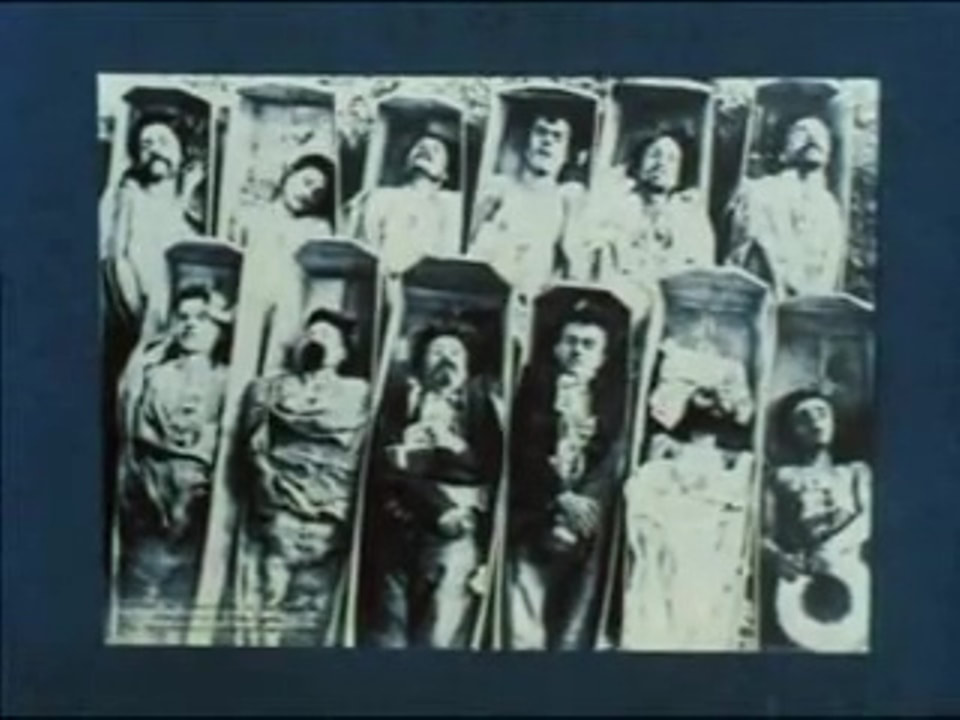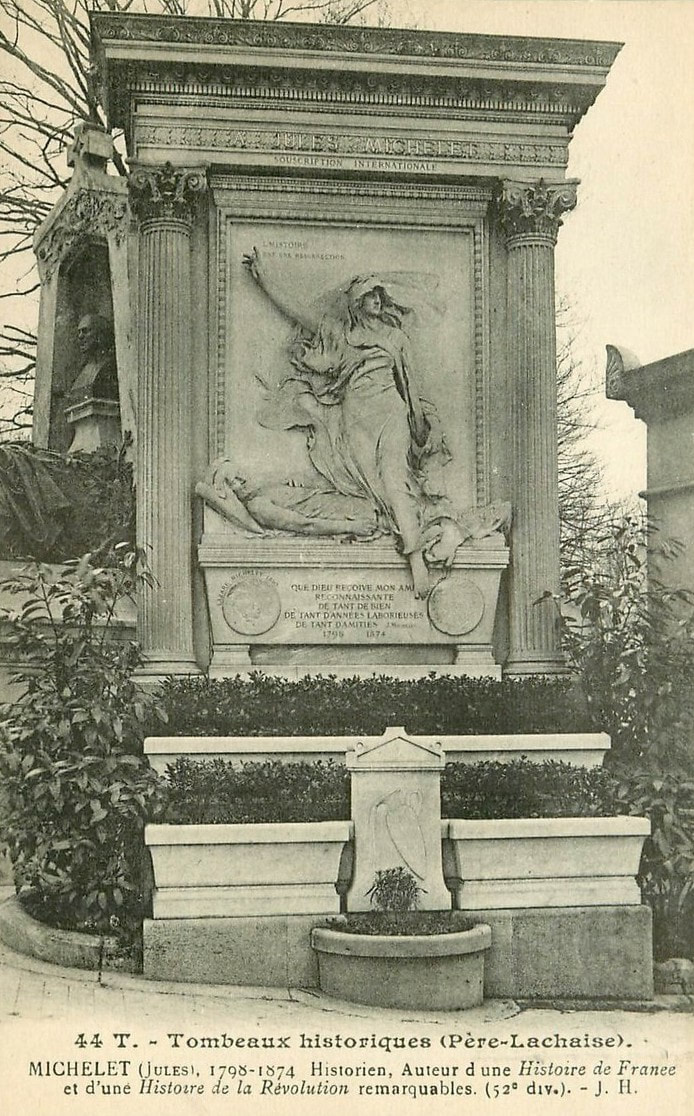Every Revolution Is a Throw of the Dice
- on the 1977 film by Danièle Huillet and Jean-Marie Straub
- on the 1977 film by Danièle Huillet and Jean-Marie Straub
This is my interim report before presenting the film at a workshop next Saturday (9 March 2019), as part of the Straub-Huillet retrospective in London, March-June 2019.
I am indebted to the close reading of Léa Nicolas-Teboul in her brilliant essay 'Mallarme/Straub-Huillet, une politique du texte', in Jean-Louis Leutrat (ed.), Cinéma et Littérature: le grand jeu (De l'Incidence 2010).
I am indebted to the close reading of Léa Nicolas-Teboul in her brilliant essay 'Mallarme/Straub-Huillet, une politique du texte', in Jean-Louis Leutrat (ed.), Cinéma et Littérature: le grand jeu (De l'Incidence 2010).
1/ Mallarmé
The film records a reading by nine reciters of Mallarme's poem 'Un coup dés jamais n'abolira le hasard', using the 1914 Gallimard edition, based on Mallarmé's proof corrections. This edition varies textually and typographically from the first version published in the journal Cosmopolis in May 1897. The film is made in May 1977, on the eightieth anniversary of the poem's first publication.
Here is the same section of text from Cosmopolis, then from the proofs with Mallarme's corrections, and then the posthumous NRF edition:
Here is the same section of text from Cosmopolis, then from the proofs with Mallarme's corrections, and then the posthumous NRF edition:
All three versions can be consulted at Gallica, here, here and here. At Sotheby's in 2015 was sold (for 963,000 euros) the manuscript Mallarme supplied to Ambroise Vollard in 1897 for an unpublished edition with illustrations by Odilon Redon, the edition with his proof corrections above. Here is the page corresponding to the three versions above:
Straub and Huillet's film closes with images of the title page of the 1914 edition and a photograph of Mallarme from 1895 by Paul Nadar, son of the famous photographer Nadar:
The photograph used is different from the original in that the sheet of paper in front of Mallarmé has writing on it, whereas in every reproduction I have seen of this very famous image the sheet of paper appears to be blank:
I don't know if the writing was added by the filmmakers or if the image they found was already doctored. If I could read the writing there might be a clue, but I can't make it out, and turning the sheet of paper upside down doesn't help much:
2/ the recital
The recital corresponds exactly to Mallarmé's text, except that at roughly six minutes one of the reciters (Marilù Parolini) omits the word 'soucieux' ('anxious').
The text is recited by nine people, five men and four women. The lines each speaks are supposed to correspond to a different typographical variant of the poem. The variations in the poem are determined by whether the words are in upper or lower case, whether they are in Roman or italics, and whether they are one of four different point sizes. Six of these variations can be seen in this excerpt:
The text is recited by nine people, five men and four women. The lines each speaks are supposed to correspond to a different typographical variant of the poem. The variations in the poem are determined by whether the words are in upper or lower case, whether they are in Roman or italics, and whether they are one of four different point sizes. Six of these variations can be seen in this excerpt:
'LE HASARD' is in Roman upper case, in the largest of the four point sizes.
'C'ÉTAIT', 'LE NOMBRE' and 'CE SERAIT' are in the second largest of the point sizes, in italic upper case.
'EXISTÂT-IL', 'COMMENÇÂT-IL ET CESSÂT-IL', 'SE CHIFFRÂT-IL' and 'ILLUMINÂT-IL' are in Roman upper case, in the third largest of the point sizes.
In italics, lower case and in the smallest of the point sizes are 'issu stellaire' and 'pire non davantage ni moins indifféremment mais autant'.
In Roman, lower case and in the smallest of the point sizes are 'autrement qu'hallucination éparse d'agonie', 'sourdant que nié et clos quand apparu enfin par quelque profusion répandue en rareté' and 'évidence de la somme pour peu qu’une'.
'Choit la plume rythmique suspens du sinistre s'ensevelir aux écumes originelles naguères d'où sursauta son délire jusqu'à une cime flétrie par la neutralité identique du gouffre' is in italics, lower case and in the third largest of the point sizes.
'C'ÉTAIT', 'LE NOMBRE' and 'CE SERAIT' are in the second largest of the point sizes, in italic upper case.
'EXISTÂT-IL', 'COMMENÇÂT-IL ET CESSÂT-IL', 'SE CHIFFRÂT-IL' and 'ILLUMINÂT-IL' are in Roman upper case, in the third largest of the point sizes.
In italics, lower case and in the smallest of the point sizes are 'issu stellaire' and 'pire non davantage ni moins indifféremment mais autant'.
In Roman, lower case and in the smallest of the point sizes are 'autrement qu'hallucination éparse d'agonie', 'sourdant que nié et clos quand apparu enfin par quelque profusion répandue en rareté' and 'évidence de la somme pour peu qu’une'.
'Choit la plume rythmique suspens du sinistre s'ensevelir aux écumes originelles naguères d'où sursauta son délire jusqu'à une cime flétrie par la neutralité identique du gouffre' is in italics, lower case and in the third largest of the point sizes.
There are two other variations on other pages. The phrase 'COMME SI' appears twice, in upper-case italics, in the third largest of the point sizes (top of the page below left). The last variation is the most common in the text: lower-case Roman, in the third largest of the point sizes, as in the page below right:
There are eight typographical variations on Mallarme's text, but there are nine reciters in Straub and Huillet's film. The filmmakers have read as typographically different the appearance of phrases that are in fact the same. In the extracts below, from the second and the antepenultimate pages of text in the poem, the phrases 'QUAND BIEN MÊME LANCÉ DANS DES CIRCONSTANCES ÉTERNELLES DU FOND D'UN NAUFRAGE' and 'N'AURA EU LIEU … QUE LE LIEU' are typographically identical but are allotted to different reciters:
I don't know if this is a mistake or a sleight of hand to create an imbalance in the distribution of text between the male and female reciters. All of the lower-case text, in its four variations, is given to women:
All of the upper-case text is given to men:
There are more men than women, and they are in twenty-two of the thirty-nine shots that feature the poem, but the women speak more, with roughly 580 words to the men's 60. Half of the text is spoken by Danièle Huillet (about 360 words).
She is positioned at the far left, below. Next to her is Marilù Parolini, then Andrea Spingler and Dominique Villain. In the middle is Helmut Färber, who speaks the nine words of the poem's title, which were spread through the text in the only words to use the largest of the point sizes. It may be that this titular role makes him a pivot between the two sides of this otherwise imbalanced disposition.
The above is the end of the first shot of the film. The next thirty-nine shots show each of these nine reciters as they recite. The camera is positioned in the middle, and opposite Farber who faces it. The other eight reciters turn to face the other way from how they are facing in the shot above, the women all looking to their right and the men all looking to their left:
The reciters remain relatively immobile, though Georges Goldfayn, Danièle Huillet and Michel Delahaye make hand gestures:
Huillet's gesture, making a fist, coincides with the word fist, 'poing', in her text. The gestures of the other two relate to their texts only obliquely, if at all.
The reciters appear in the credits in the order in which they appear in the film:
Most of the reciters appear to have something to do with cinema. Helmut Färber is a film critic, historian and teacher. Michel Delahaye was a critic who wrote for Cahiers du Cinéma and made many cameo appearances in New Wave and post New Wave films, including Jean Rouch's Petit à Petit (1970) and Jean-Claude Biette's Le Théâtre des matières (1977), the film with which Toute revolution est un coup de dés was billed on theatrical release. Georges Goldfayn has made two or three brief appearances in other films but is chiefly known as a second-generation surrealist and follower of André Breton, sometime film critic and in 1960 editor with Gérard Legrand of the first critical edition of Isidore Ducasse's Poésies. Manfred Blank is a documentary filmmaker; two of his films from 1975 feature Helmut Färber. Marilù Parolini was a stills photographer and then writer associated with Jacques Rivette on several films between 1969 and 1984 (Rivette is one of the film's dedicatees); she appeared in Jean Rouch's Chronique d'un été in 1961 and acted in Straub and Huillet's 1970 film Othon. I can find no information about Aksar Khaled, and very little about Andrea Spingler, though she appears to have become a well-known translator into German of French literature. Dominique Villain worked as an editor for Jean Rouch, e.g. on Petit à Petit, and has written books on film editing. In 1984 she was the subject of one of Gérard Courant's Cinématon portraits.
3/ shot-by-shot
The film lasts ten minutes and forty-five seconds. Counting the two opening and seven closing titles, the film is made up of forty-eight shots.
The two opening titles give, first, the film's title and an attributed source, then list the dedicatees, with signature by Jean-Marie Straub and date. Frans van de Staak (1943-2001) was a painter and filmmaker; Jean Narboni and Jacques Rivette were both critics at Cahiers du Cinéma; I don't know who the 'few others' are.
The film closes with five titles, interrupted after two with the already discussed book-title page and the photograph of Mallarmé:
After the second opening title comes a single long crane shot that pans first left to right then down and then right to left, inclining upwards at the end: as it frames the nine reciters:
This is the only camera movement in the film. The thirty-nine shots that follow fix on each reciter as they speak their lines:
The last shot before the closing titles is a fixed view over the wall of the Père Lachaise cemetery, looking south-east towards the Cité Adrienne:
4/ place and time
Toute revolution est un coup de dés was shot on May 9th and 10th 1977 in the south-east corner of the Père Lachaise cemetery, near the 'mur des Fédérés', the wall where 147 Communards were executed at the end of May 1871.
The opening shot passes a memorial plaque, too quickly perhaps to allow it to be read:
The opening shot passes a memorial plaque, too quickly perhaps to allow it to be read:
In a 1993 interview, Straub highlights the significance of the specific location of the film, its relation not only to the Commune but also to the Holocaust:
|
|
There were people arranged in a semi-circle, on the grass, in the Père Lachaise cemetery, on top of Paris, on the heights of Ménilmontant, where there are great memorials to the concentration camps, Ravensbruck, Auschwitz... It's the one corner of the cemetery where you get some sense of the city. Under this hill are buried the last Communards, who were shot in this place. So the people are sitting in a semi-circle, a semi-circle not unlike the hemicycle of Greek theatre.
|
The area in general has been a site of commemoration since the very beginning. Near the wall are the tombs of known Communards such as Augustin Avrial, Jean-Baptiste Clément, Frédéric Cournet, Emile Eudes, Léo Fränkel, Gustave Lefrançais, Henri Mortier and Walery Wroblewski. Also nearby are the tombs of famous later Communists, such as Henri Barbusse, Paul Eluard, Maurice Thorez, Jacques Duclos, Laura Marx and Paul Lafargue, as well as many Communist resistants executed by the Nazis.
Disderi's famous image of dead Communards had featured five years before Toute révolution est un coup de dés in Straub and Huillet's Introduction to Arnold Schoenberg's Accompaniment to a Cinematographic Scene:
5/ the title
In the interview quoted above, just before that passage, Straub comments on the film's title:
'The film is called: "Every revolution is a throw of a dice". It's a quotation from the great historian Michelet, the phrase appears in his History of the French Revolution.'
I have not been able to find this phrase anywhere in Michelet's writings. These are, admittedly, copious, and I have much more to go through, but it is not in the parts of the Histoire de la Révolution française that I have read, and the editor of its forthcoming Pléiade edition, Paule Petitier, affirms that the phrase is not in that work. She adds that is doesn't seem to match Michelet's way of thinking.
I have not been able to find this phrase anywhere in Michelet's writings. These are, admittedly, copious, and I have much more to go through, but it is not in the parts of the Histoire de la Révolution française that I have read, and the editor of its forthcoming Pléiade edition, Paule Petitier, affirms that the phrase is not in that work. She adds that is doesn't seem to match Michelet's way of thinking.
A further complication is the claim made - not by Straub but by commentators on the film such as Jonathan Rosenbaum - that Michelet was commenting on the Commune. Michelet died in 1874, and responded to the fall of the Commune with great sadness, but I can't see this phrase in the few works he published between 1871 and his death. The film makes a connection between the memorial to the Commune in the Père Lachaise and a phrase found somewhere in Michelet, or possibly elsewhere, and from that some commentators have assumed that the remark was made about the Commune.
I have found the phrase not in Michelet but in the writings of the Jesuit social theorist Luigi Taparelli (1793-1862). In 1850 he wrote: 'Ogni rivoluzione è un dado che si gitta', which an 1896 translation rendered as: 'Toute révolution est un coup de dés.' Taparelli knew (and disapproved of) Michelet's work, so he may have been quoting him, but he doesn't say so and the context doesn't suggest it.
A French Catholic priest, the Toulousain Jean-Baptiste Caussette (1819-1880), refers to capitalist speculators in his 1871 book Dieu et les malheurs de la France, saying that 'in their eyes, a revolution is just a throw of the dice' - 'A leurs yeux, une révolution une révolution n'est qu'un coup de dé' (p.36). Caussette does not appear to be quoting Michelet here.
I doubt very much that Straub found the phrase in the works either of Taparelli or Caussette. I am still reading through Michelet and may still find it there.
A French Catholic priest, the Toulousain Jean-Baptiste Caussette (1819-1880), refers to capitalist speculators in his 1871 book Dieu et les malheurs de la France, saying that 'in their eyes, a revolution is just a throw of the dice' - 'A leurs yeux, une révolution une révolution n'est qu'un coup de dé' (p.36). Caussette does not appear to be quoting Michelet here.
I doubt very much that Straub found the phrase in the works either of Taparelli or Caussette. I am still reading through Michelet and may still find it there.
Whatever the source of the title, the attribution made by the film puts at its centre a curiously disproportional pairing of two texts: on the one side, Michelet's, seven words from among the thousands of the source text (whichever that is); on the other side, Mallarme's, seven hundred and twenty-one words corresponding to (or intended to correspond to) the whole of Mallarme's text.
To offset this imbalance we can see that the film proposes, and possibly resolves, two more evenly distributed oppositions. The first aligns the film's title and the title of Mallarme's poem, and could be resolved with an implied 'mais' (in which I would hear 'Mai') between them:
To offset this imbalance we can see that the film proposes, and possibly resolves, two more evenly distributed oppositions. The first aligns the film's title and the title of Mallarme's poem, and could be resolved with an implied 'mais' (in which I would hear 'Mai') between them:
Toute révolution est un coup de dés, (mais) un coup de dés jamais n'abolira le hasard.
Every revolution is a throw of dice, but a throw of dice will never abolish chance.
Every revolution is a throw of dice, but a throw of dice will never abolish chance.
The second aligns the film's title and the last line of Mallarme's poem, spoken by Danièle Huillet and in the subtitles translated (by her?) as 'Every Thought emits a Throw of Dice':
Toute révolution est un coup de dés.
Toute Pensée émet un Coup de Dés.
Toute Pensée émet un Coup de Dés.
I needn't add that in the second syllable of Mallarme's 'émet' I hear 'Mai', though in hearing that the last five syllables of each phrase (as well as the first two) are identical, I must detach the '-et' of 'emet' from its 'em-', and then hear in the latter the initial of Michelet and Mallarme, as well of Mai.
It has been noticed that though Straub and Huillet made the film together, Danièle is only credited as a '(ré)citant'. It may not surprise that hear in the last word of the poem, (re)cited by her, the initial of her first name, as signature.
Straub's signature came at the beginning of the film, in the form of three initials. It doesn't surprise me that the initials of Jean-Marie Straub are also those of the two authors identified by the film as sources:
(As I long ago learnt from Michael Temple's The Name of the Poet: Onomastics and Anonymity in the Works of Stéphane Mallarme (University of Exeter Press 1995), this kind of play with initials is deeply Mallarméan.)
